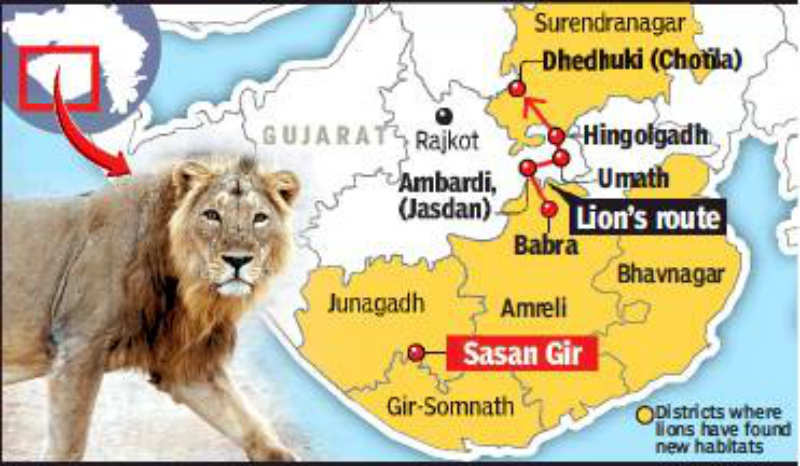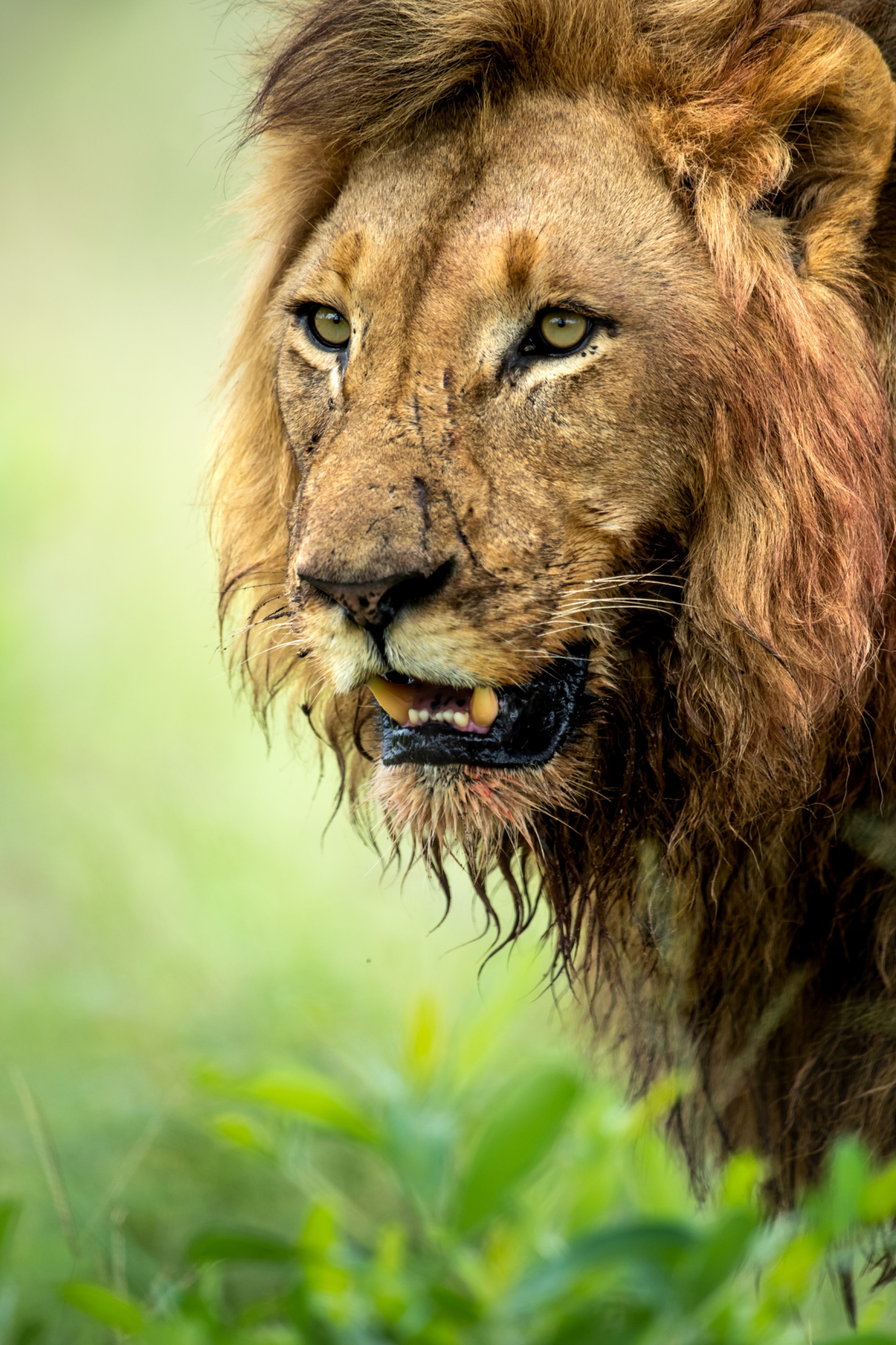
Lion
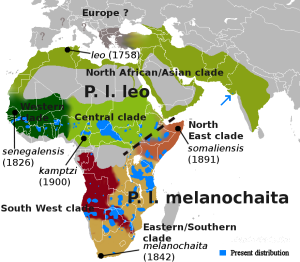
Lions- often referred to as ‘The king of the jungle’ (odd as they are rarely found in the jungle) are usually one of the animals visitors want to see if not the main one.
They are very impressive and it is understandable why they are popular. No other predator dares lie out dozing in the open plains all day.
However over the last few decades, lion declines have been horrific, with declines of more than 2/3 since the 1960s.
Lion conservation is important, because to have a thriving lion population, you need a very large protected area, and an intact ecosystem- so all the other animals benefit. I have used a large variety of sources to compile this, but one study of great interest is “Lion conservation in West and Central Africa” by Hans Bauer, published in 2003. In 1996 the estimate for the lion population in Africa was thought to be between 30,000 and 100,000, however the IUCN African Lion Working Group suggested a more realistic number was 18,000-27,000. They also suggested, that of 38 reserves and parks across these regions that used to have lions, they are definitely lost from 23.
The Asiatic lion is different; Its only current home in Asia, is the Gir forests of western India. However, something that many people do not know is that the Asiatic lion population of Gir is a tiny relict of possibly the largest spread lion subspecies. The Asiatic lion still exists in Africa – the western and northern lion population are very closely related to the Asiatic lion and are thought to have last naturally interbred a few centuries ago. Importantly, they are still so genetically similar that they are not different sub species. This is important, as it means that only just over half of the Asiatic lions live in and around Gir, the rest live in Africa. I hope to add many more destinations over time. If you run safari lodge or camp or tours please do get in touch through the above link “list your wild place”. We are keen to list as many of the places to see wild lions as possible.
It should be noted, that in historic times the Asiatic lion population spread as far as Spain, though the last ones were likely lost around the time of Jesus. Asiatic lions survived in the Caucuses for far longer, surviving until around the end of the first millennium (1000AD). Ecologically, the conditions of Southern and Eastern Europe have not changed much in the last millennium. However, until a significant change in human habitation, there is no space for lions to return to this area.
Current estimates suggest that at most there are 20,000 lions in Africa (Some suggest 20,000-25,000, though LionAid did a thorough assessment of the lions on the continent in 2020 and came up with just 9200). If this lower number is correct, then there is no longer more than 10,000 wild lions in the world. Having said that, below is the 5 largest populations, which are relatively well known, and these add up to above that number. Time will tell.
As keystone species, and apex predators, lions are incredibly important, as such it is a species that is followed closely on this website. On each tab, you will find a list of articles about that species. Find below a list of articles on lions, below that is links to places we list where you can see lion. Please note, tab 2 and 3 refer to two separate populations of the Asiatic subspecies if only recently confirmed through genetic testing.
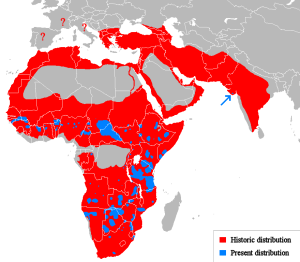 As you can see from the map above, the name African lion is not particularly accurate, given that half of Africa was inhabited by the Asian Lion. Still, even taking into account this number of African lions which belong to the Asiatic lion subspecies, still the population of African lion subspecies account for the majority of lions left in the world. It should be noted, that while Tanzania is still claiming a lion population of 14,000-15,000 Lionaid survey in 2020 claimed around 9600 in the world, so someone is definitely wrong. The image at the top of the page is an African Lion.
As you can see from the map above, the name African lion is not particularly accurate, given that half of Africa was inhabited by the Asian Lion. Still, even taking into account this number of African lions which belong to the Asiatic lion subspecies, still the population of African lion subspecies account for the majority of lions left in the world. It should be noted, that while Tanzania is still claiming a lion population of 14,000-15,000 Lionaid survey in 2020 claimed around 9600 in the world, so someone is definitely wrong. The image at the top of the page is an African Lion.
It is unfortunately a fact, that many of the small lion populations have not survived over the last 20 years. Small reserves across Africa, once had no fencing, allowing the wildlife, including Lions to migrate as prey densities would support. However, as the human population has grown, these small reserves have become islands of wilderness, in a sea of humanity. Many of these small islands of wilderness have lost their lions. IUCN estimated a population of 23000-39000 lions in Africa in while an Oxford university estimate suggested 20000-25000 in 2023. It should be noted that the numbers I have quoted for each country, comes from this website. Given the most thorough assessments suggest a lower number, some of these should be taken with a pinch of salt, however, I am going to use these numbers until I get more reliable ones to replaces them
Over time, I hope that the destinations that we list on this site will grow fast, but for now we list the large lion ecosystems- hopefully with a few more coming soon. You will find more detail and when there is a link, within each countries tab below.
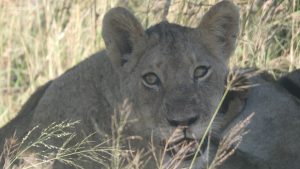
1. Kruger national park, and the greater Limpopo 2500
2. Serengeti and surrounding reserves 3000
3. Kalahari Zambezi 1500 (though with the size of this
reserve, there is space for much growth)
4. Selous (Nyerere national pakr 4000-5000 though as most of this vast reserve is set aside for hunting, much if it is unavailable to photographic safari (latest survey suggests 4300)
5. Ruaha national park (Tanzania) 4000
This accounts for around anything from 40% up to 64% (it is likely to be at the top end of this estimate as this includes the biggest lion populations of Africa) on the lions of african depending on which estimate you trust. Indeed, given Lionaids estinate, it accounts for as much as 167%. We hope to add other populations in the coming years.
While it is undeniable that the lion populations in the East and South of the continent have reduced, there would have to have been a significant population in west and north of the continent as well. While, clearly, much of this space has been lost to human expansion, there is still much space for a great increase in this population, whether it ever gets a chance to grow is something we will have to wait and see.
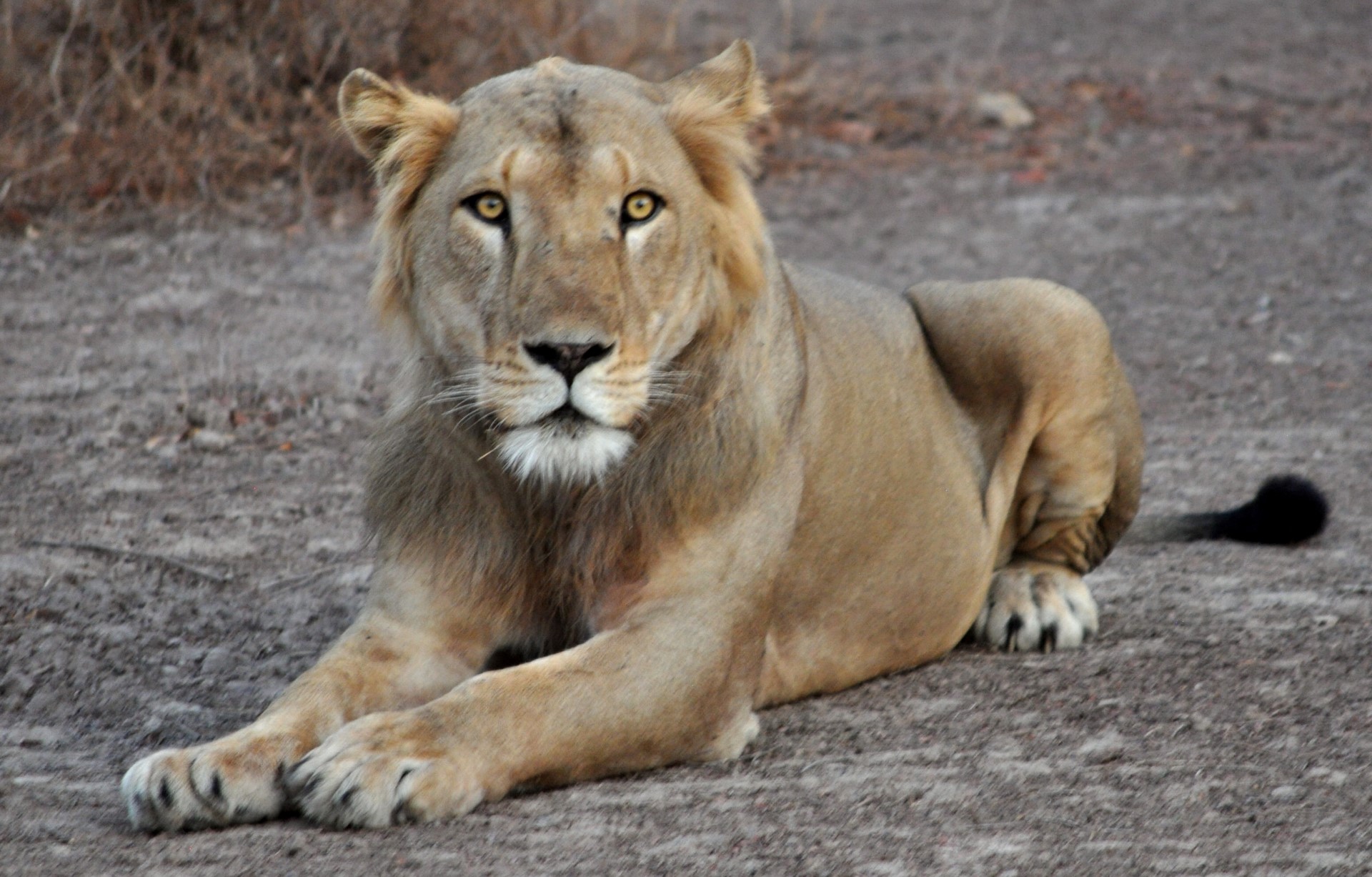
Known as Panthera Leo Leo, the Asiatic Lion is more complicated than once thought. Historically found throughout North, West and Central Africa, Large parts of Asia as well as throughout Southern Europe. Different parts of this huge area have been lost at different times. Oddly despite this, it appeared to be officially forgotten for some time, so that only recently it was demonstrated genetically that the West African lion and the Central African lion are the subspecies as the Asiatic lion, and as such there ar
e actually more Asiatic lions in Africa. As such, the Asiatic lion is split into 3 clades. Which will be handled separately.
So here, the west African Lion clade:
1. W-Arly-Pendjari Transfrontier park was estimated to hold 250-500 members (it should be noted that it is likely close the botto at the current time)
2. Senegal’s Niokolo-Koba national park formerly a stronghold, the number of lions as low as 30 at the moment (down from as high as as 120 in 1996)
3. Waza national park, Cameroon is was thought to host 14-21 lions in 2010, I dont know what has happened since
4. Kainji Lake National Park, Nigeria is thought to host around 30, while Yankara may only have 5 left.
5. Bénoué ecosystem: (Faro, Bénoué and Bouba-Ndjidda national parks as well as 32 hunting areas, covering 30,000 square km) contains 250 lions
Are these over-estimates? A significant number of sources claim just 250 in the world, though others suggest around 400. Having said that, should we assume the minimum population for the WAP complex and Benoue estimate being accurate (studies are recent and thorough) this gets us to to over 400 already.
What is unfortunate though is the populations in the other 3 reserves.
Having said that, back around 1900 there was only an estimated 20 lions left in India, so a similar recovery could give each of these reserves a 400 population in 50 or so years. I would estimate given the reliability of these numbers that at the time of the study in 2020 the total population numbered around 800. though even half of this would be enough for a recovery over a relatively short term.
The western and the central lion population was (relatively recently) far larger. 1900 it is thought that there may have been as many as 200,000. Even as recently as 1970 there were thought to have been 90,000.
Unfortunately, at the current time, I have no links in these place – but would love to, please get in touch if you work in one of these reserves, we would love to help people find you.
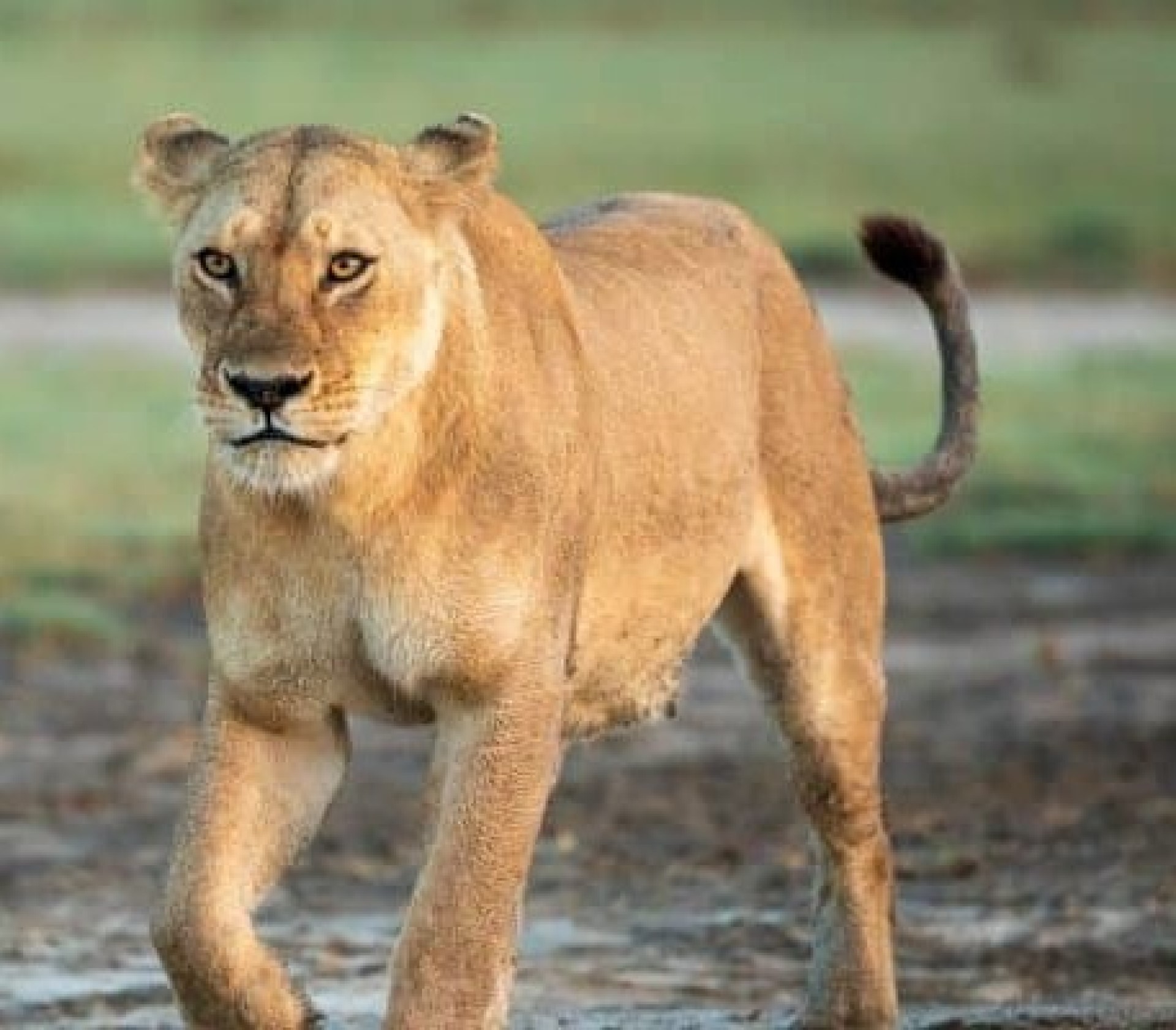
Known as Panthera Leo Leo, the Asiatic Lion is more complicated than once thought. Historically found throughout North, West and Central Africa, Large parts of Asia as well as throughout Southern Europe. Different parts of this huge area have been lost at different times. Oddly despite this, it appeared to be officially forgotten for some time, so that only recently it was demonstrated genetically that the West African lion and the Central African lion are the subspecies as the Asiatic lion, and as such there are actually more Asiatic lions in Africa. As such, the Asiatic lion is split into 3 clades. Which will be handled separately.
So the central African lion is thought to have a population of around 2200 (as of 2015-2016): I have not been able to calculate a proper number for this, I hope to have more information in the future.
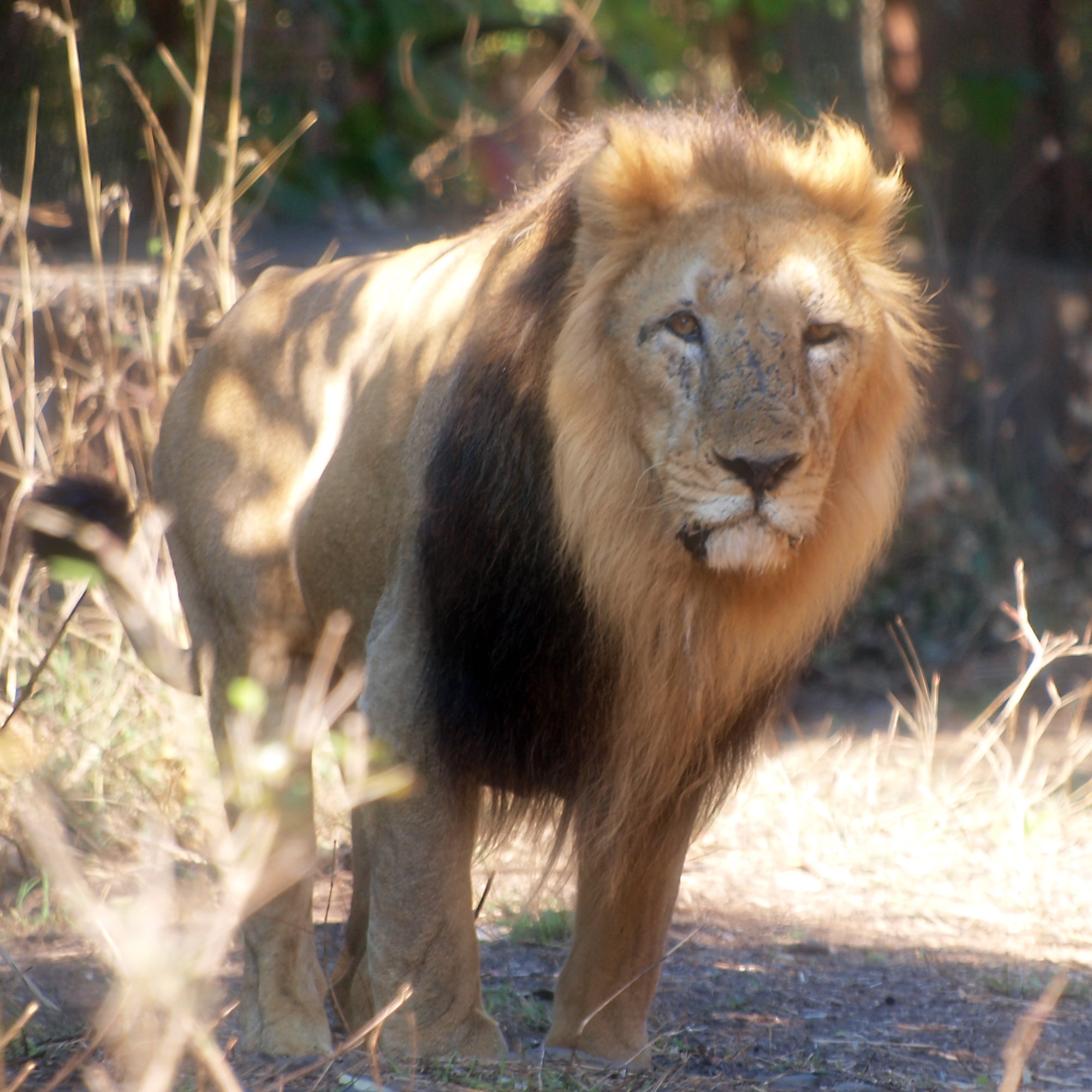
Known as Panthera Leo Leo, the Asiatic Lion is more complicated than once thought. Historically found throughout North, West and Central Africa, Large parts of Asia as well as throughout Southern Europe. Different parts of this huge area have been lost at different times. Oddly despite this, it appeared to be officially forgotten for some time, so that only recently it was demonstrated genetically that the West African lion and the Central African lion are the subspecies as the Asiatic lion, and as such there are actually more Asiatic lions in Africa. As such, the Asiatic lion is split into 3 clades. Which will be handled separately.
So the North African and Asiatic clade: The north African lion, otherwise known as the Barbary lion, was lost some time ago (the last one was shot in 1942). However, there has been much discussion about reintroducing them to Morocco, for some time. It could well be done in the near future.
The rest of this clade (remembering that the West and Central African lions are the same subspecies as this) are found in the Gir forests of India. This population is thought to be as high as 600, though deaths have been particularly high for a significant period of time. This population only currently has one protected home, from which the lions are overflowing- the Gir forest. The forest is home to as many as 600 lions, though only covering 1400 square km (545 miles) the best reserves in Africa have roughly 1 lion per every 5 square miles. Many of these lions live outside, with as many as 200 having made their home by the sea, a great distance form the park.
Scientists have long argued that some of the lions should be moved to another reserve as having all of them in one place leaves the entire clade vulnerable to natural disasters or indeed an epidemic. Indeed, it has gone all the way to the high court in India, but the Chief minister of Gujarat has simply refused to enforce the order (he does not want to loose the status of housing the only wild Asiatic lion (at least the Asiatic clade). There was much effort to give the Indian lions a second home, but the government saw them as their property and refused to allow any to be moved. The proposed home was set up for them – the Kuno reserve, with a number of villages moved to accommodate them. The Gujarat government has suggested all sorts of reasons to refuse, including that the reserve is unacceptable – despite being almost identical to Gir.
Kuno is now the home of the cheetah reintroduction (not that this should rule it out, as they lived alongside each other in the past, and from where they have been moved). Never-the-less, Gujurat has refused to budge even having lost the case in the supreme court.
It seems absurd that something this important can be held up because of politics but there we are. There are plans to move 40 lions to Barda wildlife sanctuary, which would at least give a second home. However, given the Asiatic Lions historical range covering such a vast area, the idea that one state in India could block translocations to anywhere else is quite scary.
Never-the less, it is still a fascinating place to visit.
Lion information by country (first west and central, then east, then south, then Asia) then any vagrants
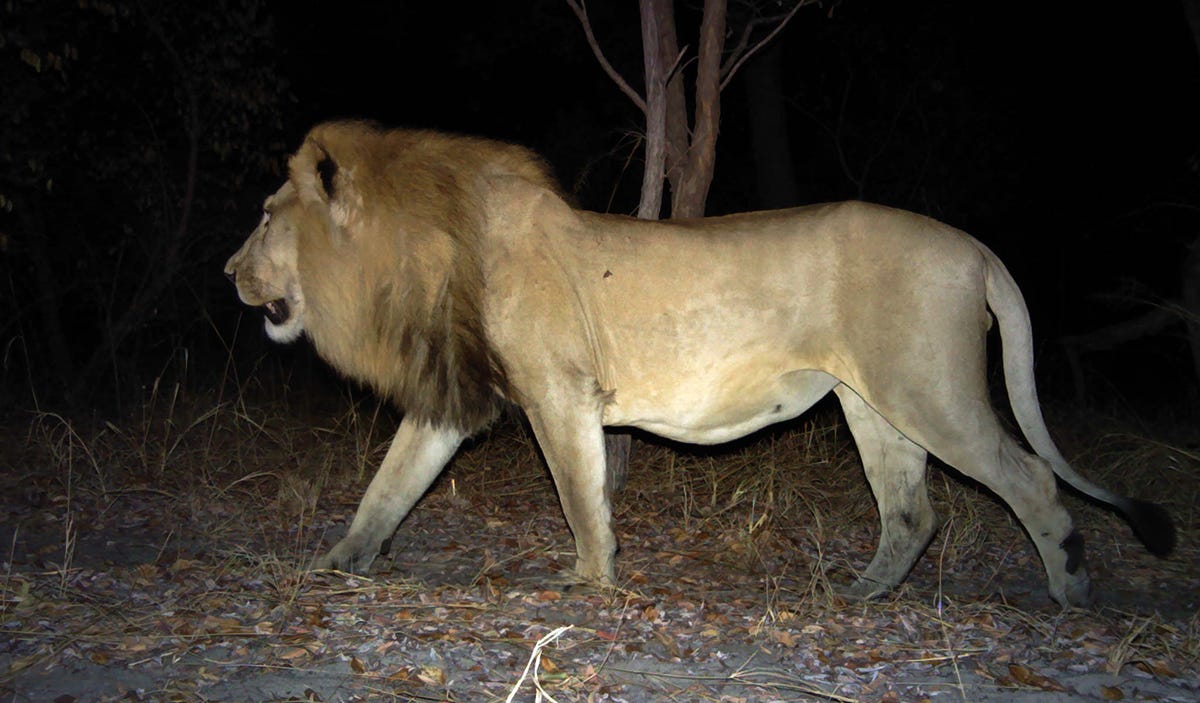
Formerly around 1000, currently the number of lions in the country is probably only between 10 and 30
Angola has had its lion population fallen dangerously in the last couple of decades. A 2020 ground survey in Angola’s largest areas has an estimated 30 lions. Similarly, the Panthera Foundation estimated 10-30 lions in the country. However, previous estimates were much higher (for the same area). The IUCN estimated a population of 750–1,000 lions in 2006, while Duke University estimated 1,900 lions (in 2013). A 2021 survey found no lions, though a 2021 camera trap survey, photographed 5 lions. This area in question is Luengue-Luiana and Mavinga National Parks. What is terrifying, is that this decline appears to have occurred in just 12 years. It should be noted, that these two national parks are small sections of the Kalahari Zambezi transfrontier park – should the protection improve, there is clearly space for an impressive wilderness. On the other hand, given the current situation, we could find that any lions that cross into Angola get poached, and therefore it will be bad for the lions of the KAZA and Africa as a whole (the whole of the KAZA has a population of roughly 3500).
Looking at the map of Lion range, there are small specks of lion north of these parks in question. Unfortunately, current feelings is that these lion populations no longer have any lions (of course, whether these reserves might one day be a good place to translocate lions, is another question) .
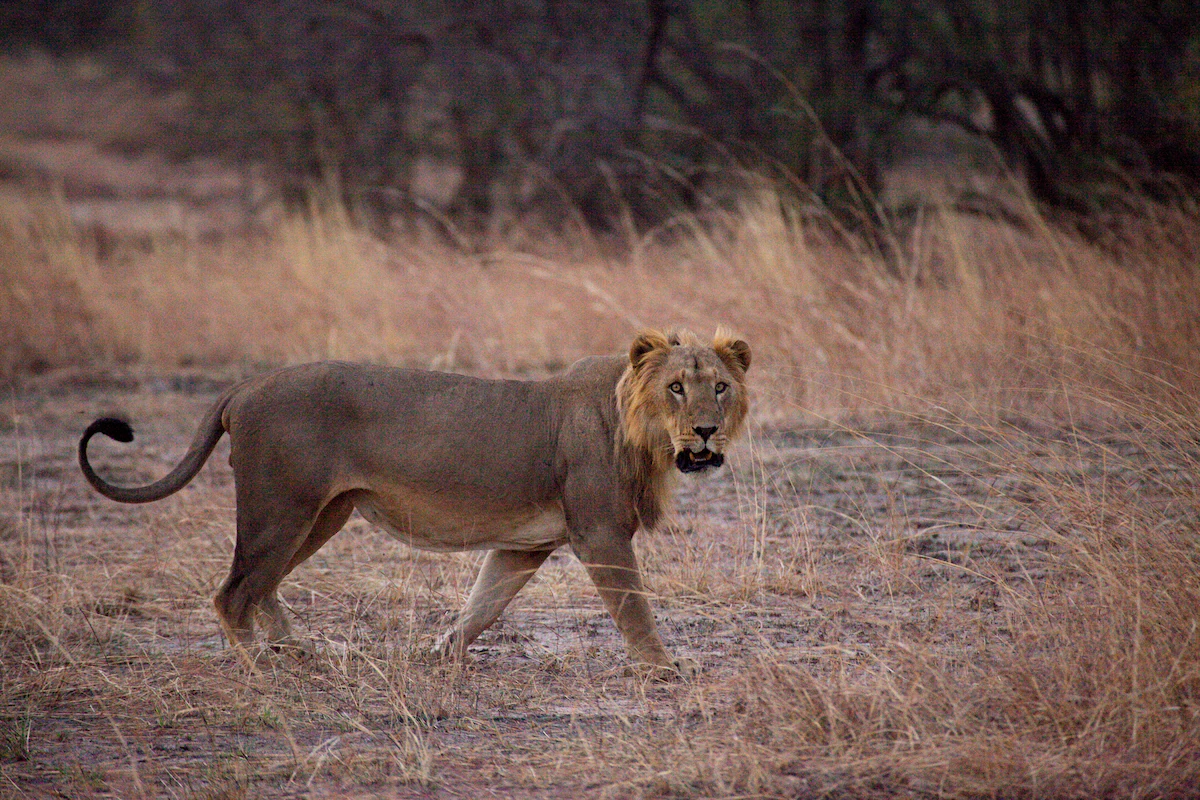
Currently estimated at 250 lions in the country.
Burkina Faso has a total of 4 national parks as well as 2 well known reserves (amongst many more, often smaller). I hope to cover all, in the future. However, here only those with lions are of interest. There may be more than listed below, but these will be added in the future as I become aware of them.
Arli National Park: is perhaps the jewel on the crown for this country. It is the Brukina Faso section of the WAP complex which is an area of . It also includes the Singou Reserve, also within Burkina Faso (one of just 3 “complete” reserevs which is a specific class). The WAP complex covers over 17,000 square km (6500 square miles, around 1000 square miles than the world famous Kruger national park, so large enough to protect its wildlife long-term). The WAP complex is an incredibly important reserve for a whole variety of wildlife. Its own numbers claim 246-466 west African lions (many sources claim this population is only 250 mature individuals left, while ranges usually put the population between 120 and 374). Wherever this population number lies, it is suggested that 80-90% of the remaining west African lion population are within this reserve. It should be noted that this is a clade of the Asiatic lion subspecies, and this population could possibly be a similar size to those living within Gir forest national park in India (though it should be remembered that many lions live outside this national park as well – this will be covered in the India tab). This makes this reserve an important reserve for lions as a whole, and the western/central African Lion clades of the Asiatic lion in particular. When a page for the Arli national park, and the WAP complex in general is added, this will be linked from this text.
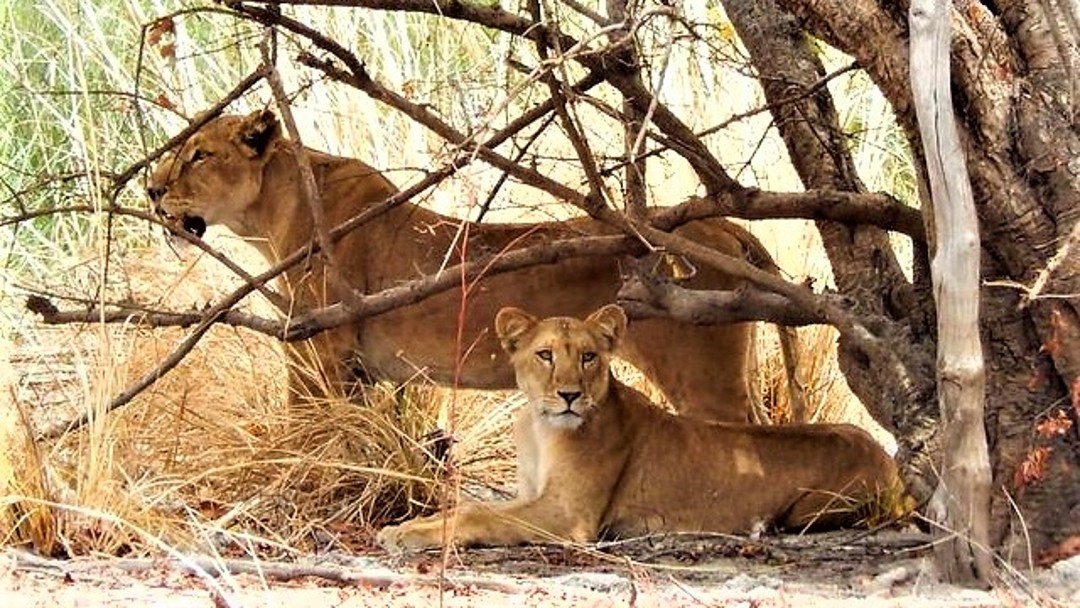
Benin has an estimated 120 lions, mostly found within Pendjari National Park (part of the WAP complex). This national park is currently thought to host around 70-100 wild lions, though it is thought that its carrying caacity is 400-500, so with better management, this park could allow a siginfican recovery in lions within this country. The W national park borders this park, also within Benin, and it is likely that the lions move pretty freely between the parks.
It should be noted that these lions roam outside the park, and regularly kill local peoples cattle. As such, there should be significant concern about retaliatory killing reducing this number. While there may well be another reserve or national park with wild lions, I have not found reference to it. The remaining 30-50 lions may well be free roaming in the area around Pendjari national park. I hope to add more information in the future
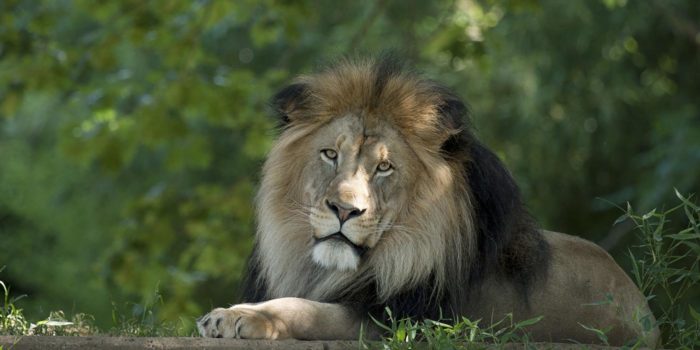
The countries lion population is estimated at 100 (see here), however estimates of the number of lions in Cameroon do vary, with the numbers below adding up to roughly 330.
- Bénoué complex: A 2015 study estimated that there were 250 lions in the Bénoué complex, which includes the national parks of Faro, Bénoué, and Bouba Ndjida.
- Bouba Njida: Estimates suggest that there are around 80 lions in Bouba Njida. However, a more recent estimates suggest that Cameroon’s national population is around 270 lions, split between these two areas. It should be noted that as each of the areas listed above are transboundary, and the lion populations of both are considered significantly reduced, it would seem that the lions of these two transboundary area are more free to roam, and are less likely to have to fight for good territory elsewhere. As such, it is likely that the lion population of Cameroon would vary more from year to year, than other countries.
As with many other countries on this list, it would appear that Cameroon has enough land set aside for wildlife, to support a far larger population of lions. Whether poaching has depressed these numbers or other more natural forces, it suggests that the Cameroon lion population has the capacity to bounce back in a way that most Southern African populations do not. While I hope to be able to assist your travel to these places in the future, I have no links at the current time. Having said this, a visit to Cameroon, to see their lions is likely to have a greater impact on their conservation than perhaps a better known lion destination.
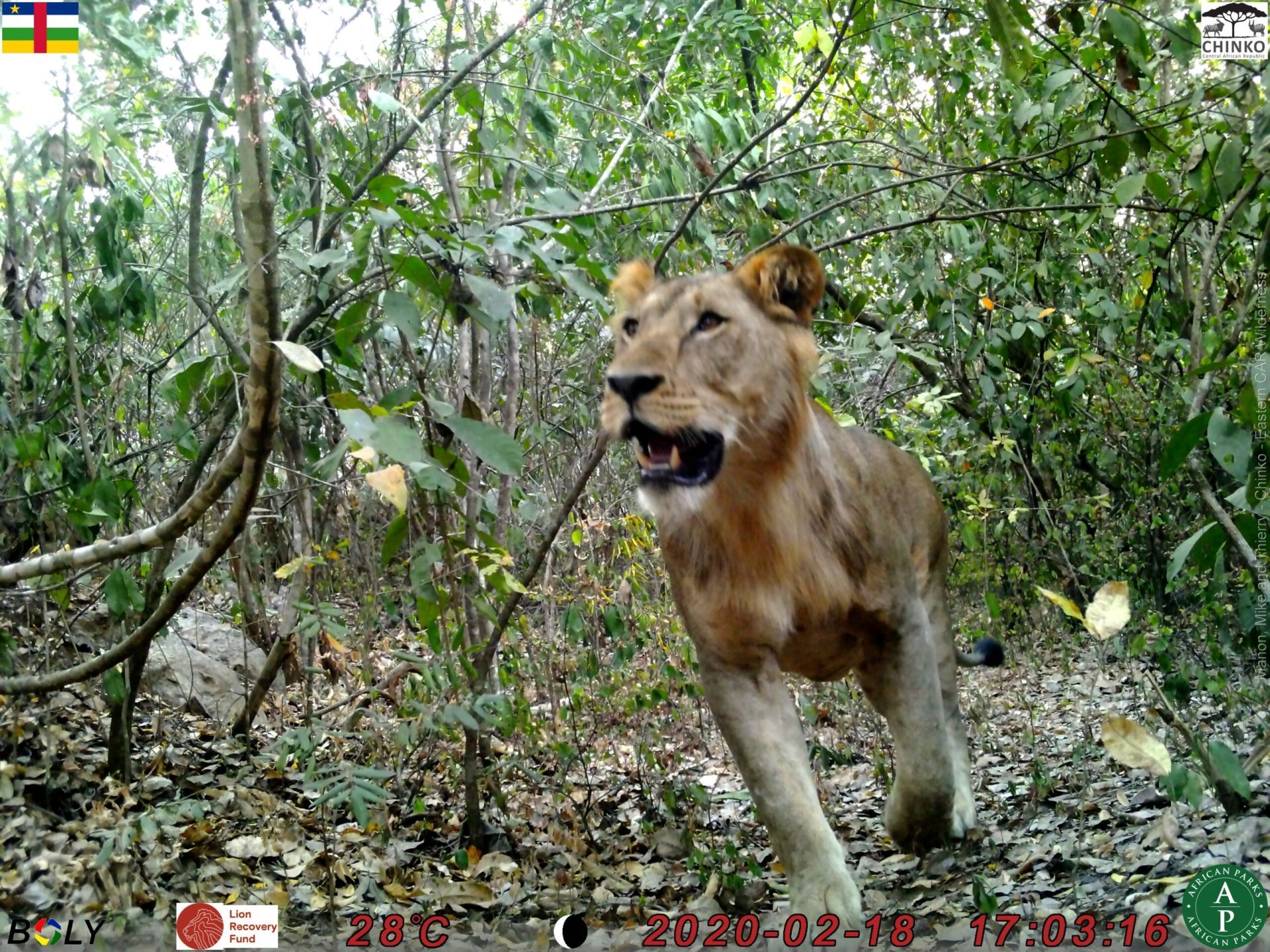
The central African republic has an estimated 50 lions remaining, with 30 residing in the Chinko Nature Reserve.
Other reserves claiming wild lions in the country (population estimates have to be taken with a large pinch of salt, as various reserves claim healthy lion population, which would dwarf the whole country population – still, I hope to add these destinations in the future) include:
- Bamingui-Bangoran National Park and Biosphere Reserve – claims to still have lion, though if there was a healthy population within this reserve, it could dwarf the population estimates for the whole country. I cannot find infomation to say etiher way.
- Manovo-Gounda St. Floris National Park – assessments and reports from as early as 1997 suggest that this park lost its lions (and black rhino) this long ago.
- Awakaba National Park
- Aouk Aoukale
- Yata Ngaya
- Nana Barya
- Zemongo Faunal Reserves
- Several hunting reserve (while lions may well be hunted in these reserves, it is not going to be officially sanctioned, as the lion here cannot be hunted sustainably.
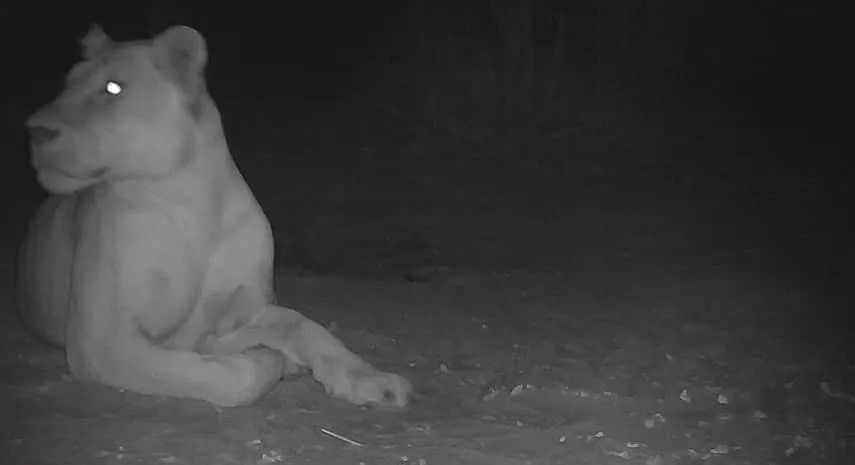
Chad is thought to have a wild lion population of roughly 200.
Sena Oura national park was in the news in the recent past, for a lion being seen for the first time in 20 years (click here to read our article on this news from the time).
Zakouma National Park is home to popular predators including a more significant lion population, as well as hyenas and leopard, but also large herds of central African savannah buffalo, elephant, and endemic species such as the pale fox and the kordofan giraffe.
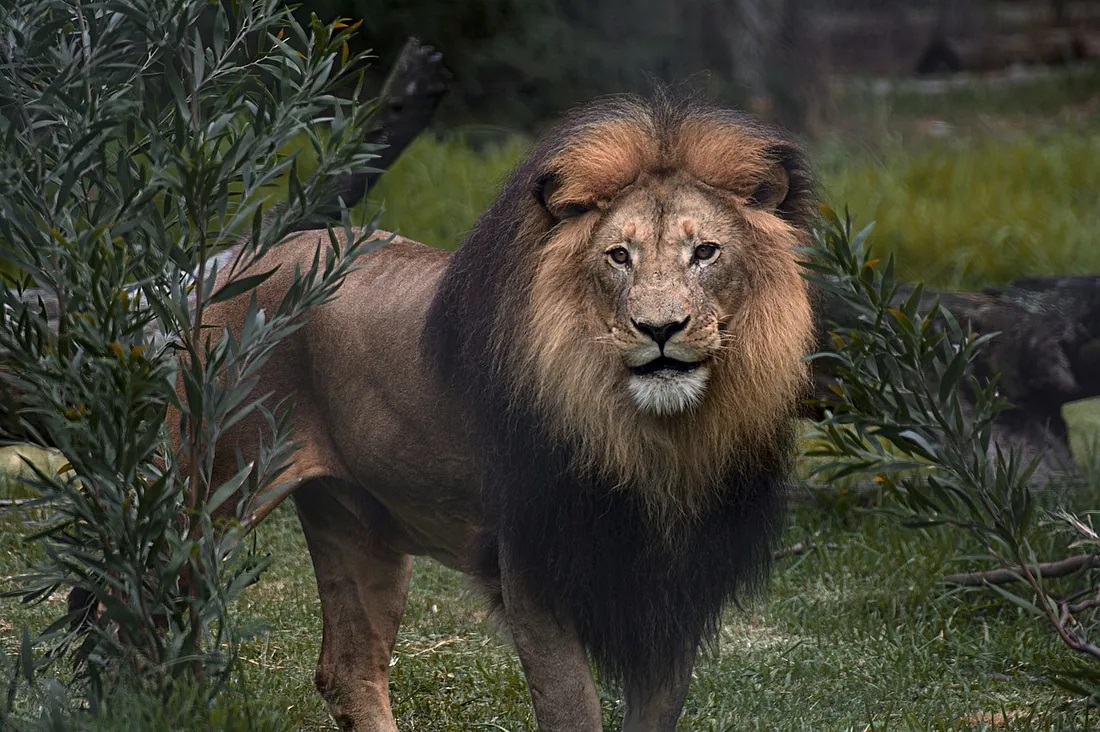
Lions are present in the Democratic Republic of the Congo (DRC), but their population is threatened by human activities. There population is down to 211 from around 1600 in the 1970s. There is definitely space for this population to grow – but these are the current known lion habitats
- Ishasha Valley
The Ishasha River valley is a good place to see lions, hippos, elephants, and buffalo. However, the population of lions in the valley has been reduced by poaching, land invasion, and conflict. The lions in this area are known for their tree-climbing habits.
- Odzala-Kokoua National Park
In the 1990s, this park was considered a lion stronghold, but by 2014, no lions were recorded there, making the population locally extinct.
- Lésio-Louna Reserve
There is physical evidence of lions in this reserve, but there is no estimate of the population density or distribution.
It is not clear, whether the factors that lead to this decline have reduced, but it is thought that generally not. Never-the-less as time goes by, often places are getting better at looking after the wildernesses that remain within its boundaries. Furthermore, it would be really good for the DRC, to be able to offer its many forest safaris, alongside safaris more familiar within eastern Africa.
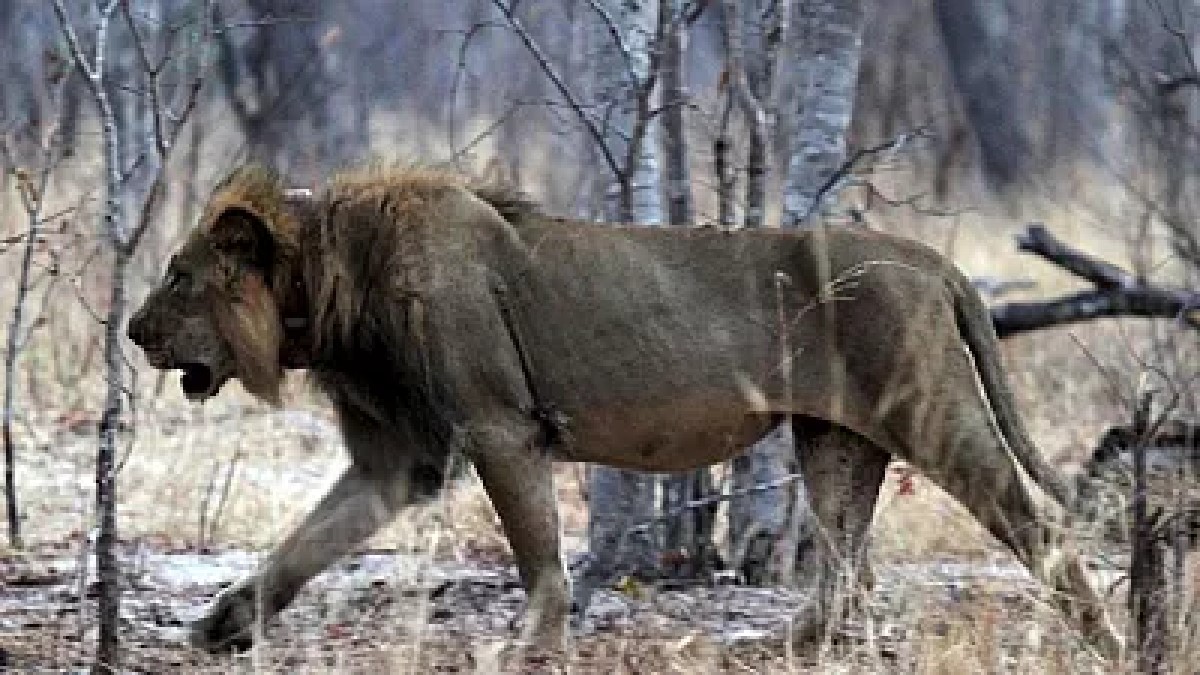
Formerly widespread across northern Nigeria, today lions survive in only two sites in the country: Kainji Lake National Park (thought to have a lion population of roughly 30 (as of 2021) alongside various species including African wild dog, elephant, leopard and various antelope) and Yankari Game Reserve (thought to have between 8 and 10 wild lions, alongside African bush elephant, olive baboon, patas monkey, Tantalus monkey, roan antelope, hartebeest, lion, African buffalo, waterbuck, bushbuck and hippopotamus (there is a youtube video of a group of researchers looking for these last lions in the Yankari game reserve, unfortunately it is from a channel which does not allow videos inserted into other websites, so click here to follow the link
This suggests a lion population of Nigeria of around 40. Nigeria has a large and growing population, and there has been a great deal of destruction of the natural world within the country. Having said this, there is still much hope, and many people who are eager to protect the natural world, both for its own intrinsic value, but also for the tourism money that thriving ecosystems can generate.
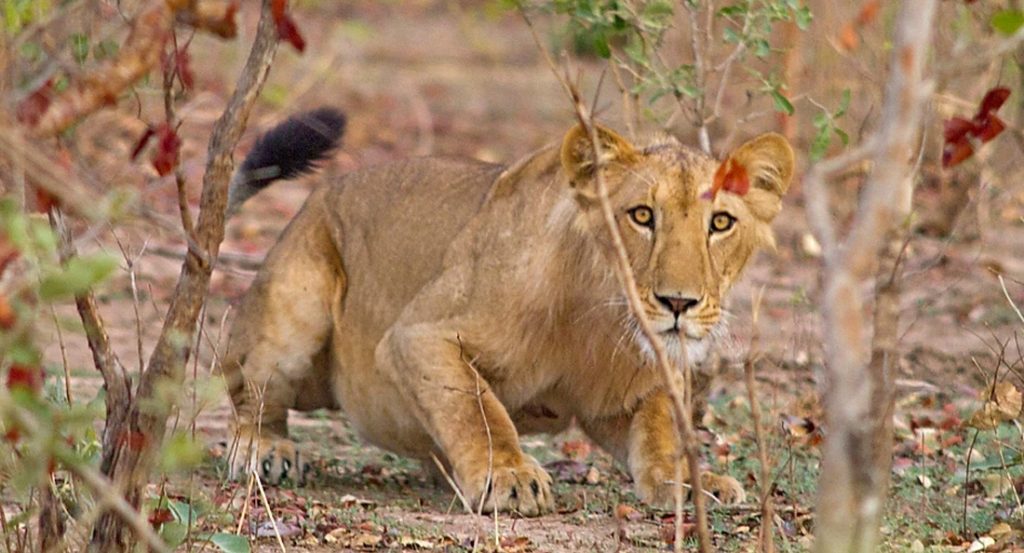
The population of Lions in Niger (150 or there abouts) is thought to be restricted to its section of the WAP complex, which is a transboundary area, including land in Benin and Burkina Faso and is perhaps the last good hope for the west African lion – around 80-90% of the western lion population live within this protected area. While the other countries have a separate national park, protecting an area of land, Niger only has part of a single park (W national park) which stretches across the borders of all 3 countries).
It is unclear how many lions live within this national park, though it is definitely greater than 8 as there is currently a study that is following 8. Given that W national park contains around 1 third of the land in the WAP complex, so it should hold around 150 lions within it.
Whether the land is currently capable of supporting this number is questionable. It should be noted that the WAP complex is roughly twice the size of the Kruger national park, suggesting that the entire area might be able to support around twice the lion population of the Kruger – this is roughly 3000 lions. Now, it is quite possible that this area is drier, and therefore has a lower carrying capacity, but this gives space for a large increase in the lions within the WAP complex. It should be noted, that this might well be an over estimated, as some of the WAP complex is hunting areas, and while they will not hunt many (if any) lions with in these, hunting prey will also reduce the number of lions that these areas can support. If this was accurate, one could expect a lion population of W national park in Niger, of around 2000. While we are a long way from this, it suggests that with better conservation, Niger could have a lion population that would give it the sixth largest population in Africa.
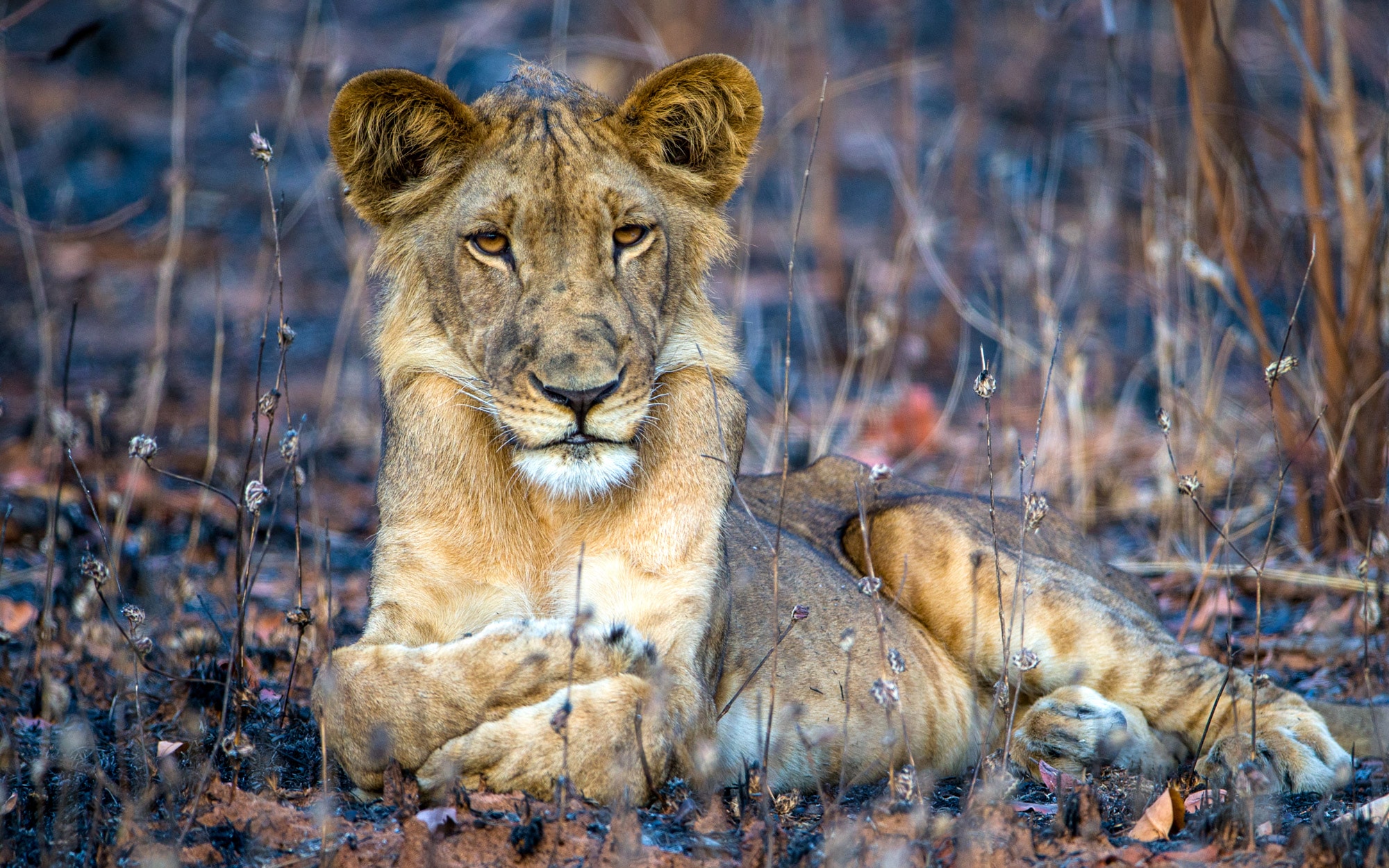
The senegal has a wild lion population that is not agreed. One states 150 lions, which are found within Niokolo-Koba National Park. However, others suggest that while this is the one place in the country where lions still live, there are actually only around 20 within the park. This park also hosts leopards, Derby Eland and even a population of roughly 150 wild chimpanzee.
This makes the park particularly interesting, as we can see how chimpanzee avoid being hunted by these big predators, and even might be a good way to see how early hominids lived shortly after leaving the trees.
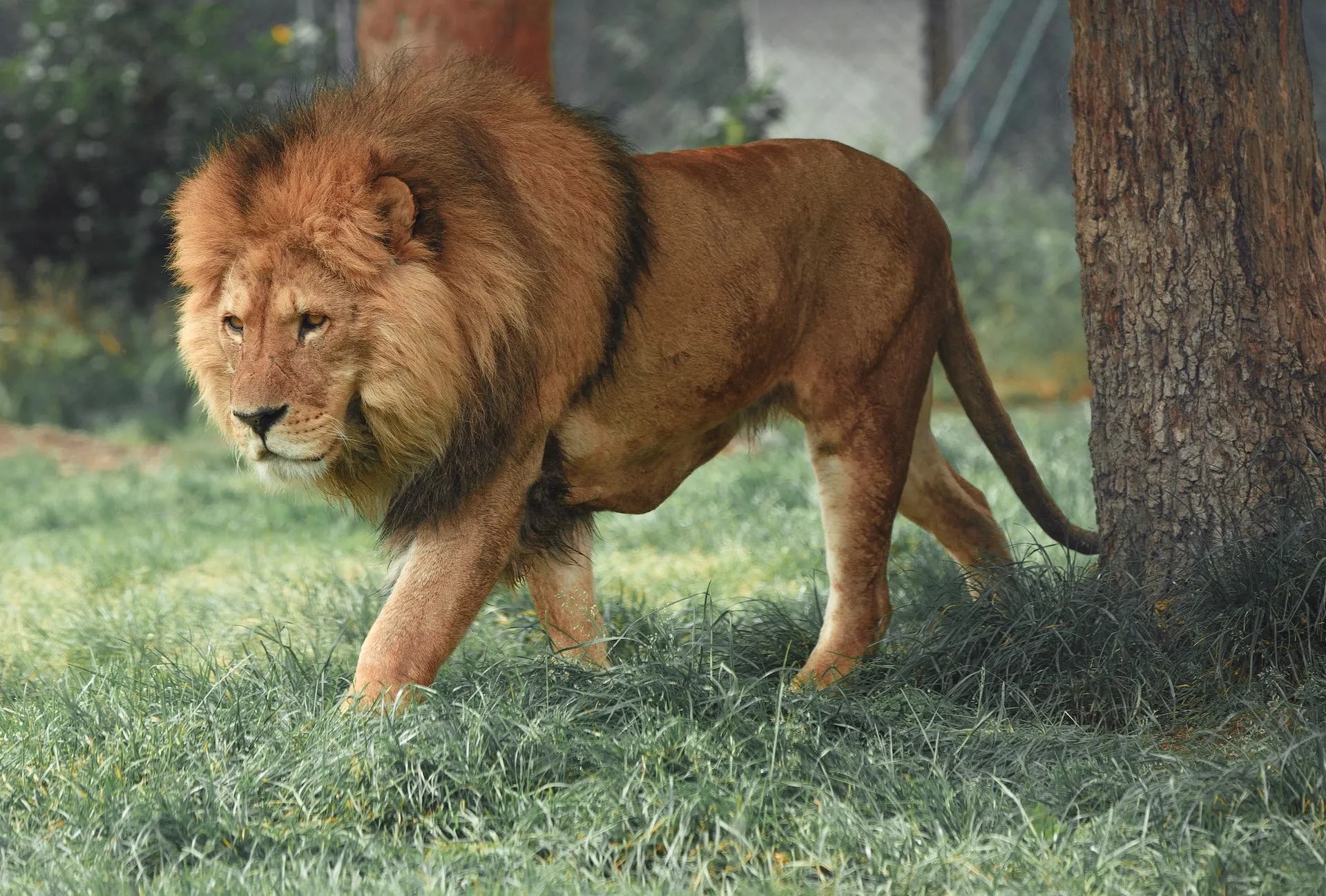
Ethiopia is thought to have roughly 200-300 remaining lions (though there are sources which claim as much as 800 lions). It should be noted, that Ethiopia once hosted a separate subspecies, however, only 8 of these survive and all live in a zoo.
Truly wild lion populations within Ethiopia include
Alatash National Park: In 2016, an international research team led by Oxford University conservationist Hans Bauer discovered a previously unknown lion population in Alatash National Park, which is located near the border with Sudan. The team used camera traps to capture images of lions and footprints, and estimated that there were between 100 and 200 lions in the area.
Kafa biosphere reserve: In southwest Ethiopia, there are around 25 lions in the Kafa biosphere reserve. However, little is known about the lions, including whether they are resident year-round or just migrate through.
Other areas where lions have been spotted include Boma-Gambella, South Omo, Welmel-Genale, Ogaden, and Awash. I have listed them below. I should add, that I have included the number of lions each area claims, however, they cannot possibly be correct, as if you add them up, you get a number of roughly 4000, which would give Ethiopia a lion population second only to Tanzania
Awash Valley and Gambella areas: These areas have seen an increase in human-lion conflict and retaliatory killings by local communities.
Boma-Gambella: This area has a population estimate of 500 lions.
South Omo: This area has a population estimate of 200 lions.
Welmel-Genale: This area has a population estimate of 100 lions.
Ogaden: This area has a population estimate of 100 lions.
Bale: This area has a population estimate of 2,373 lions. This is highly questionable. The park is 2200 square km (850 square miles) and even with an average density of one lion for every 5 square miles, this would require of over 10,000 square miles of unprotected land to be protected. It should be noted, that these lion are famous as the black maned lions. The largely recognized figure, is around 50 lions in this area.
Nechisar: This area has a population estimate of 1,030 lions. This is also completely rubbish, as the park is only around 400 square miles, and it is thought that its carrying capacity is roughly 23. Only 4 lions have been visually identified.
This does not suggest that lions within Ethiopia are particularly secure, but they are clearly better than a range of other places. We dont currently list any of these places to visit, but are eager to in the future – if you work in out of these areas do get in touch.
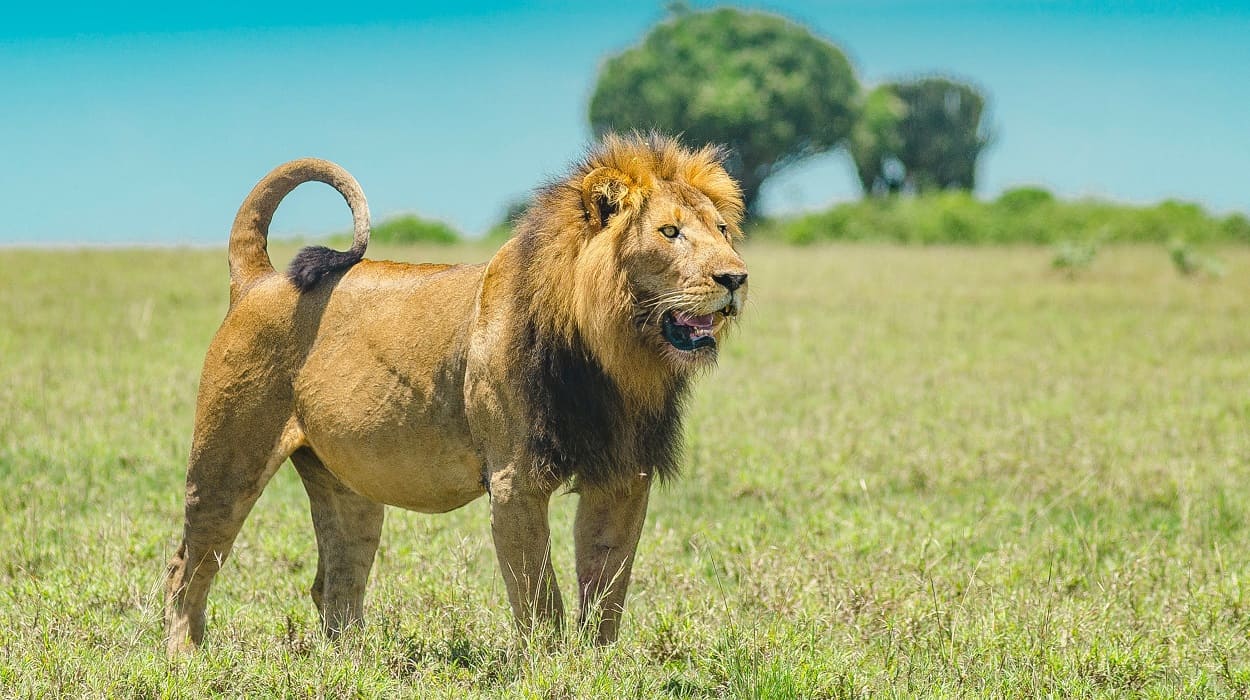
In 2021, Kenya did a survey of its wild area, and estimates that there is 2589 lions (this is around 74 lions more than the list I have been using for most of these numbers)
So, where are the Kenyan lions?
The Massai Mara national park is found in Kenya. It has an estimated population of 850-900 (this is a lifetime dream location for many people interested in wildlife). Look up the Serengeti ecosystem, for links in this ecosystem. We hope to add far more over time.
Ambosseli national park hosts roughly 100 wild lions. It is a big 5 reserve, and even has cheetah and a few wild dog, making it an ecotourism big 7 reserve (something that many larger reserves cannot claim). This reserve is only 392 square km. The Tsavo Amboselli ecosystem is thought to have roughly 675, thought these numbers are estimates, and it is unclear how accurate they are. While this whole ecosystem is very large, parts like Tsavo West are not good for animals like lion, which means that their density is likely to be higher than these numbers would suggest.
Niarobi national park has roughly 35 lions. It should be noted, that the range of the lions is thought to be around 400 square km, which is almost 3 times the size of the park at 140 square km. This park is odd. Once opening to the open savannah, the suburbs have expanded, and now largely completely surround it. Never-the-less, there is few other places in Africa where you can see lions with skyscrappers in the background. This reserve has 4 of the big 5 (missing elephants)
Hells gate national park is tiny, at half the size of the Niarobi national park. It was a big 5 reserve in the 1950s, and there is a suggestion that there are still a handful of lions, but not more than this. It is one of quite a few national parks, split by relatively short distances of human settlement, but it might as well be the other side of the moon, for the abillity for most small animals to move between.
The Abadares mountains national park still has a few lions, though it is unclear how many. In 2000 100-200 lions were killed to help a local antelope on the verge of extinction to survive.
Lake nakuru national park has a small lion population. A 2018 survey counted just 16, even though earlier surveys had counted 60. I have personal history here, as this was the first African wilderness that I visited.
Meru national park has an estimated 76 wild lions. It covers 870 square km (340 square miles)
Mount Kenya National Park is 715 square kilometers (276 square miles) in size. Despite its relatively small size, it is a big 5 reserve, though leopard and rhino are both rarely seen.
Samburu Nature reserve has a population of 40-50 lions, alongside all of the big 5 (and both species of African rhino). Cheetah are found, and even wild dog.
Ruma National park has lions leopards and cheetah (though the lion and leopard are very hard to see) the last roan of Kenya survive in this national park, but only 19 or so are still there.
Kora national park is another ecotourism big 7 reserve. While the number of lion is hard to ascertain is the place where George Adamson worked in the 1970s. George Adamson, (husband of Joy Adamson – author of Born free along with many other books) his brother Terence, and Tony Fitzjohn worked together to rehabilitate lions and leopards in the park from 1971–1988. How easy it is too see wild lions is unclear, but well worth a visit.
Shimba hills nature reserve
Buffalo Springs National Reserve
Mount Elgon National Park
Shaba National Reserve
Chyulu Hills 250 lions
Marsabit National Park
Sibiloi National Park claims to have lions (though a survey from 2020 found none)
Malka Mari National Park has lions in its 1500 square km area this is another Ecotourism big 7
There are also likely a wide array of private reserves that are linked to these above, and perhaps even private reserves off on their own that are likely to host lions. I hope to grow the links as fast as possible
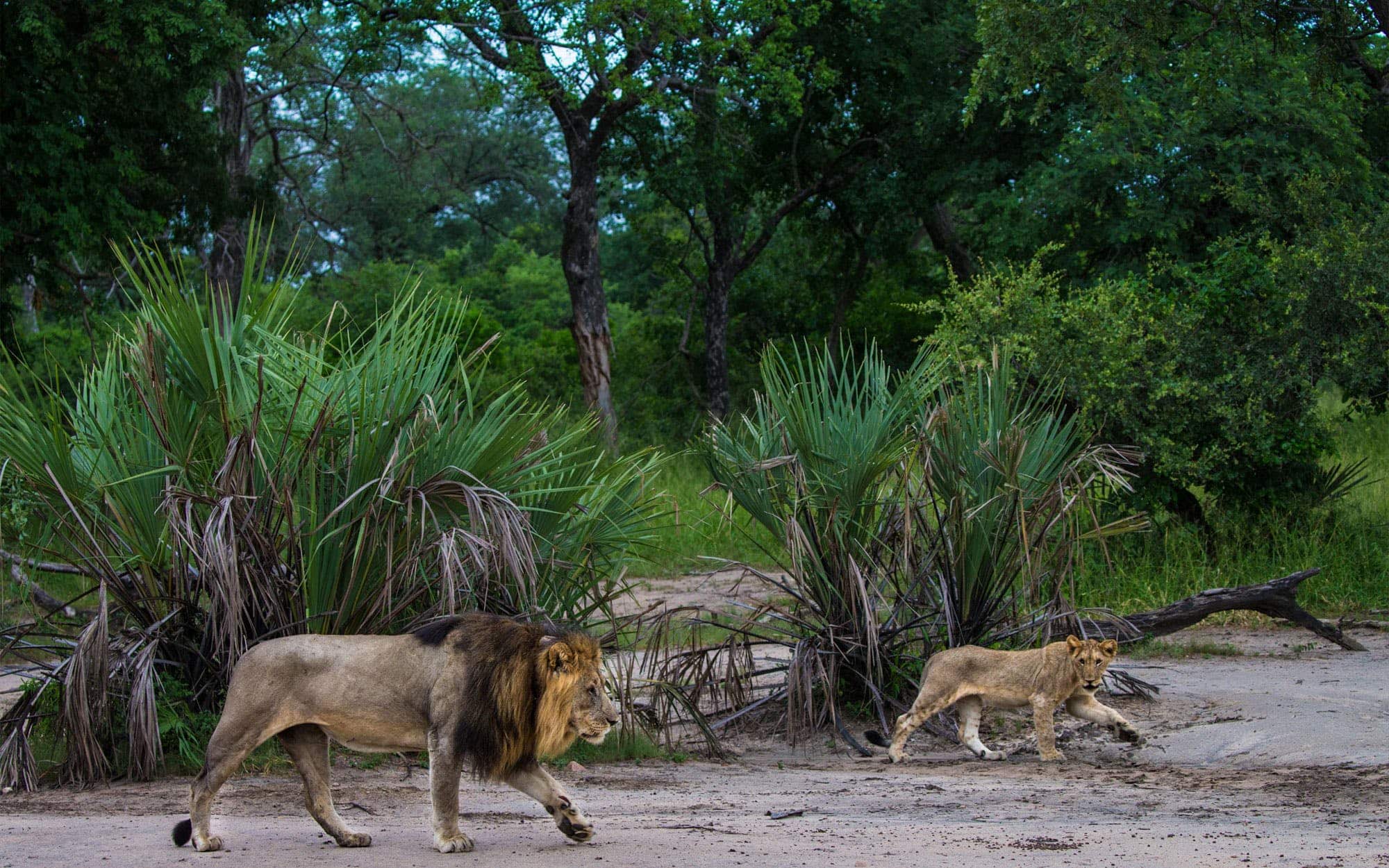
Lions in Malawi are restricted to two regions of the country.
- Liwonde National Park – this park returned the lion after 20 years absence and is a big 5 reserve, while cheetah were returned in 2019 and in 2021 wild dog returned to this reserve as well. The last update on the lions was in 2021, when the lion populatin had grown from the 9 moved, to a total of 13. Provided that they are not bothered by poachers, this population should continue to grow. At 548 square km (211 square miles, this reserve should be able to host perhaps 40 lions, so much space to expand.
- Majete Wildlife Reserve has a thriving lion population (and indeed provided the lions for the reintroduction to Liwonde national park) and as well as housing the big 5, has in recent years, had both cheetah and wild dog return (translocation). It should of course be noted, that both of these species are likely to be pretty rare until they have had time to increase in number. It covers 700 square km (270 square miles) . This reserve currently has 52 lions – which assuming 5 square miles per lion, is very close to carrying capacity (which would be 54). As such, Majete would likely continue to be a prime example of place to translocate lions out of – without this continuing, the lions are likely to start self regulating with more regular fights and males killing males (and if a dominant male is killed, this leads to all the young cubs of the pride dying, along with many of the females who will often defend their cubs to the death).
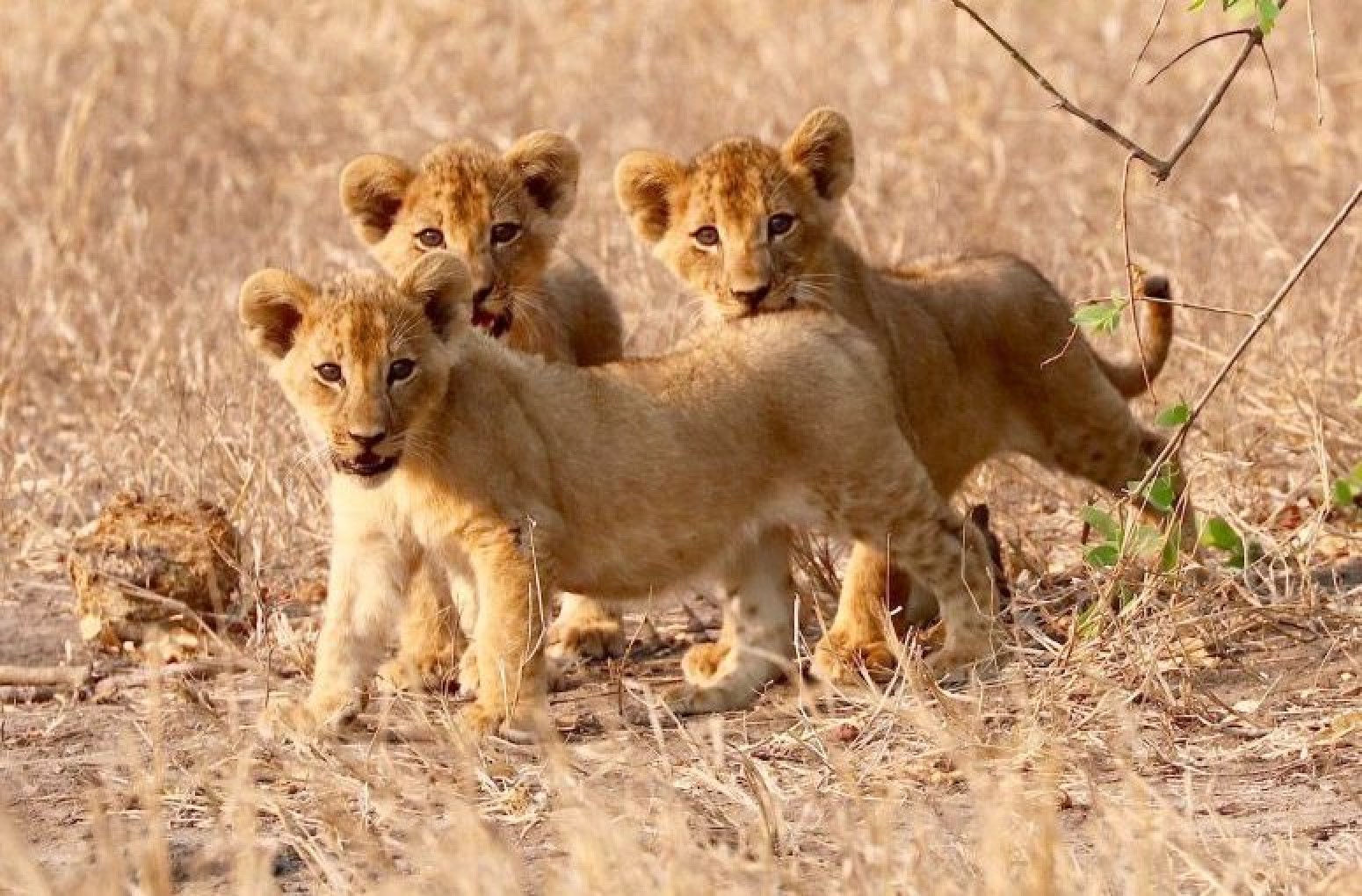
Mozambique have a significant number of lions, with the countries population estimated at around 1500
There are a handful of reserves, but some are large.
Niassa Special Reserve – 800 -1000 lions, making this one of the largest single populations (after the selous, serengeti, Ruaha, Kruger KAZA). Having said this, I find it sad, that a population of 800-1000 could be the 6 largest lion population in the whole of Africa)
Limpopo National Park only has around 66 lions of its own, but as a part of the LImpopo transfrontier park, should the poaching end, it could likely hold far more lions ( at the current time around 1600 lions roam the kruger. The Kruger is roughly 19500 square km, to the limpopo national parks 11,000, suggesting that the limpopo national park, should be able to support around 1000 lions in the right state
Other smaller lion populations include the Zambezi delta lions (a relatively recently reintroduced population of roughly 26), and the Cahorra Basa region which could have around 200.
However, there is much plans for expanding protected areas, so this population has the potential to grow in the future.
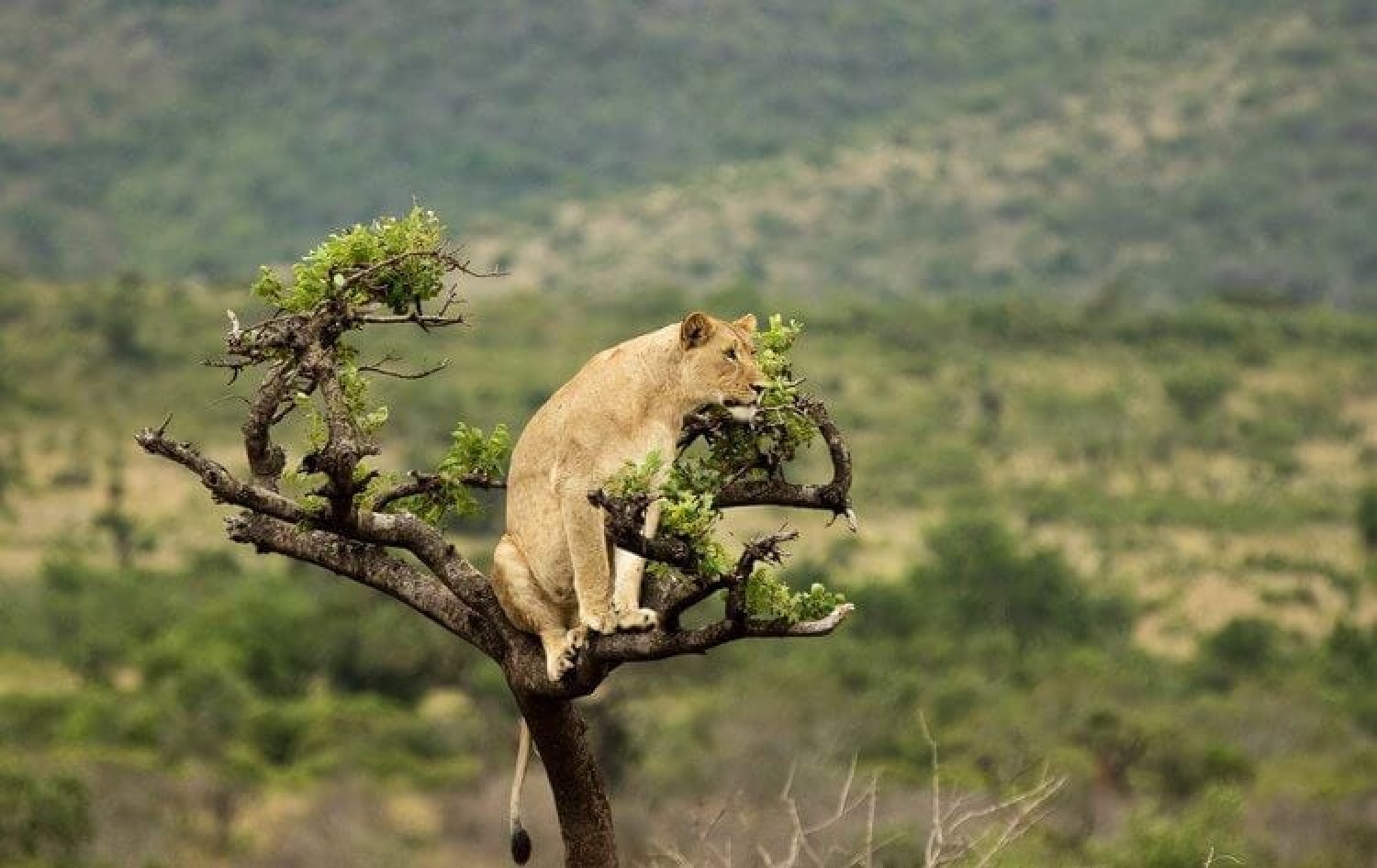
Only one reserve in Rwanda contain lions, and this is Akagera National Park, which in 1990 was known to have 250-300 lions. Unfortunately during the Genocide they were all killed, with a survey in 2002 not counting a single one. In 2015, 7 lions were moved to the reserve and in 2024 had a lion count of 78, This suggests that with this sort of recovery, the lion population could keep growing well, though time will tell if the local human population will allow this to occur.
So this countries current lion population is around 78 individuals. This can be good for Rwanda, as while it is a popular destination for forest safaris, being able to also offer savannah ecosystems will make it more popular, as someone could both trek with chimpanzee and gorilla and see lion in the same week.
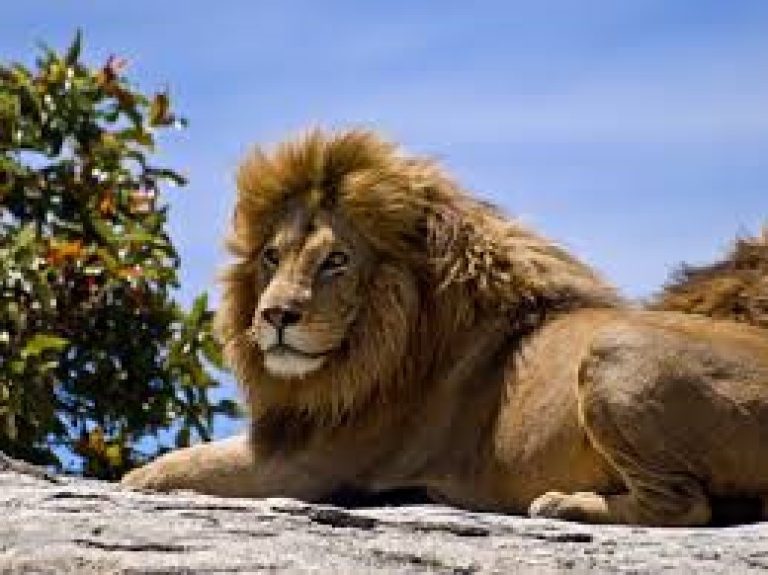
It may come as a shock that much wildlife continues to cling on in Somalia. It is certainly true, that when a country falls into civil war, that this is bad for the country as a whole, but it is not necessarily bad for the wildlife, as much poaching for money stops. It is true that often the poaching of a reserve signals the end of its useful period but this is not true.
Lions are mainly found in the southern part of Somalia, with smaller populations in the north. Other wild animals in Somalia include:
Hyenas, Foxes, Leopards, Warthogs, Ostriches, Small antelopes, Birds, Somali cheetah, Reticulated giraffe, and Hamadryas baboon.
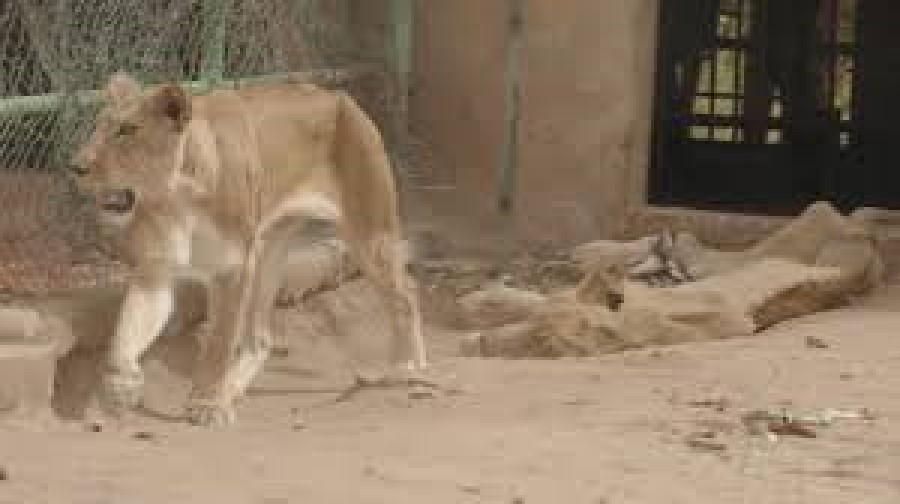
Sudan has been at war for a very long time. While there has been some surprise that things like the migration in South Sudan has survived, many wildlife species have not done so well.
Dinder national park in Sudan had a survey done in 2018, which counted around 150 lions. There are probably small numbers in other places, but there is little information on this.
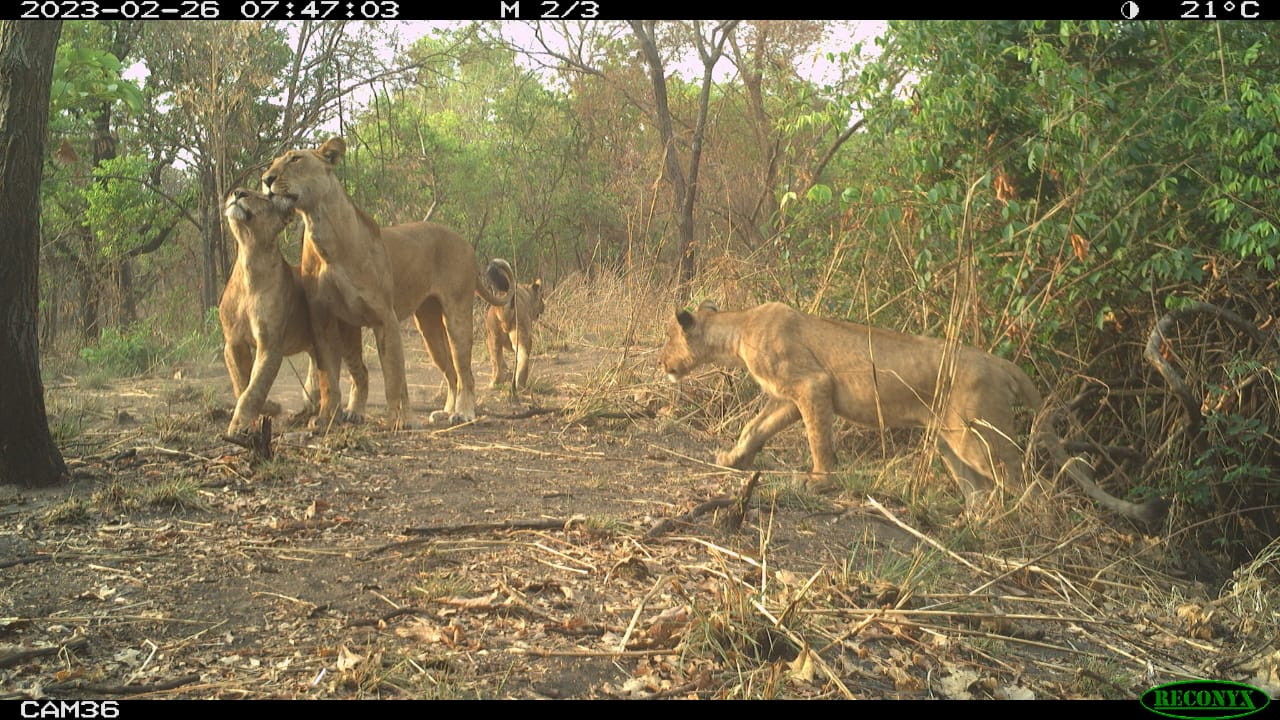
Like Sudan, having spent much of the last few decades in civil war (only ending with the splitting of the country – forming the country of South Sudan) little is known. There is a huge migration that takes place within the country – and it is therefore assumed that there are lions thriving in this area, but we do not know.
Southern national park definitely has lions though the number is uncliear. The biggest potential for lions is the migration where every year, around six million antelope migrate from South Sudan to Gambella National Park in Ethiopia. The migration includes white-eared kob, Mongalla gazelle, tiang, and reedbuck. However, the size is quite phenomenal – the Serengeti migration contains around 1.5 million wildebeest alongside a range of other animals which adds some extra size. However, that suggests that the South Sudan migration is 3-4 times the size of this migration. Could this migration be the way for South Sudan to pull its country out of poverty? It is quite conceivable for the migration in South Sudan to be able to attract millions of visitors and potentially billions of dollars of tourist money.
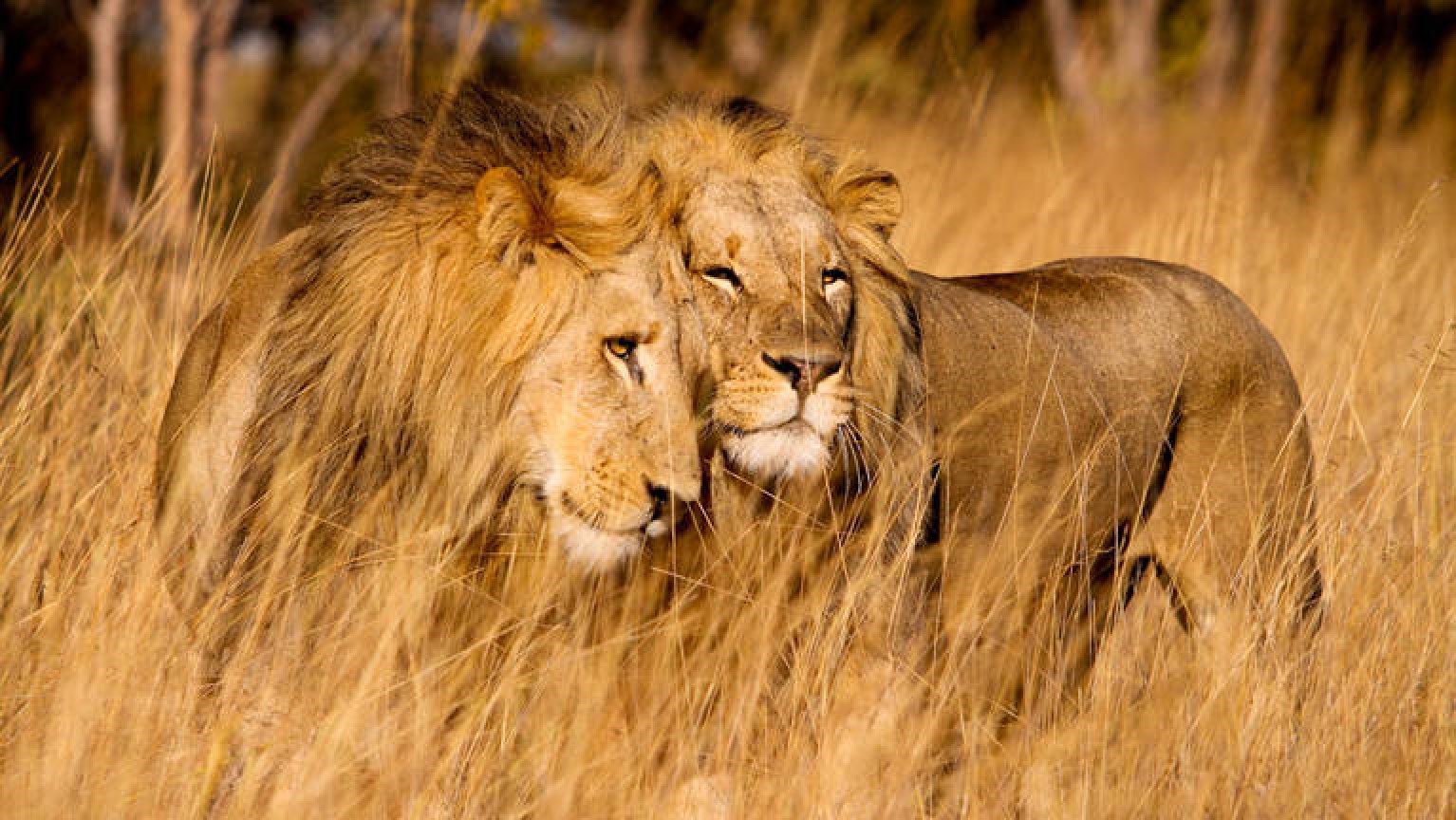
Tanzania is the undisputed king of lion areas. Out of a continent population which may be as low as 22,000, 14000-15000 lions live within its boundaries.
Many of the biggest destinations are listed on this site, though I hope to include them all.
Serengeti national park is thought to have roughly 3000 lions
Ruaha national park is thought to have 1000 lions
Nyeres national park (formerlly Selous, along with the remains of the Selous reserve) has around 5000 (1700-6900 wide bands)
Other wilderness areas will add another several thousand lions.
I have had my most exciting moments with lions in Tanzania, when one wandered through our camp at night.
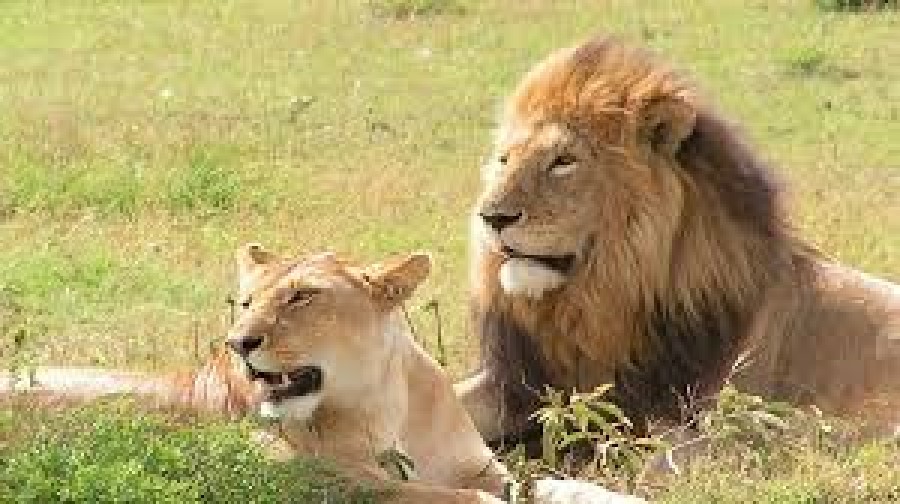
Uganda consists of both forests and open land, so the lion population is not a high, with estimates suggesting that it is between 150-400 individuals.
There are estimates of between 214 and 400 lions in Uganda, but the population is declining:
- Queen Elizabeth National Park: Home to about 130 lions, including four prides in the Ishasha plains. The Ishasha sector is known for its tree-climbing lions, which are a major tourist attraction.
- Murchison Falls National Park: Home to a large lion population – estimated at up to 250
- Kidepo Valley National Park: Home to an estimated 70 lions.
- Lake Mburo National Park: possibly home to lions with sightings of a single male in recent times.
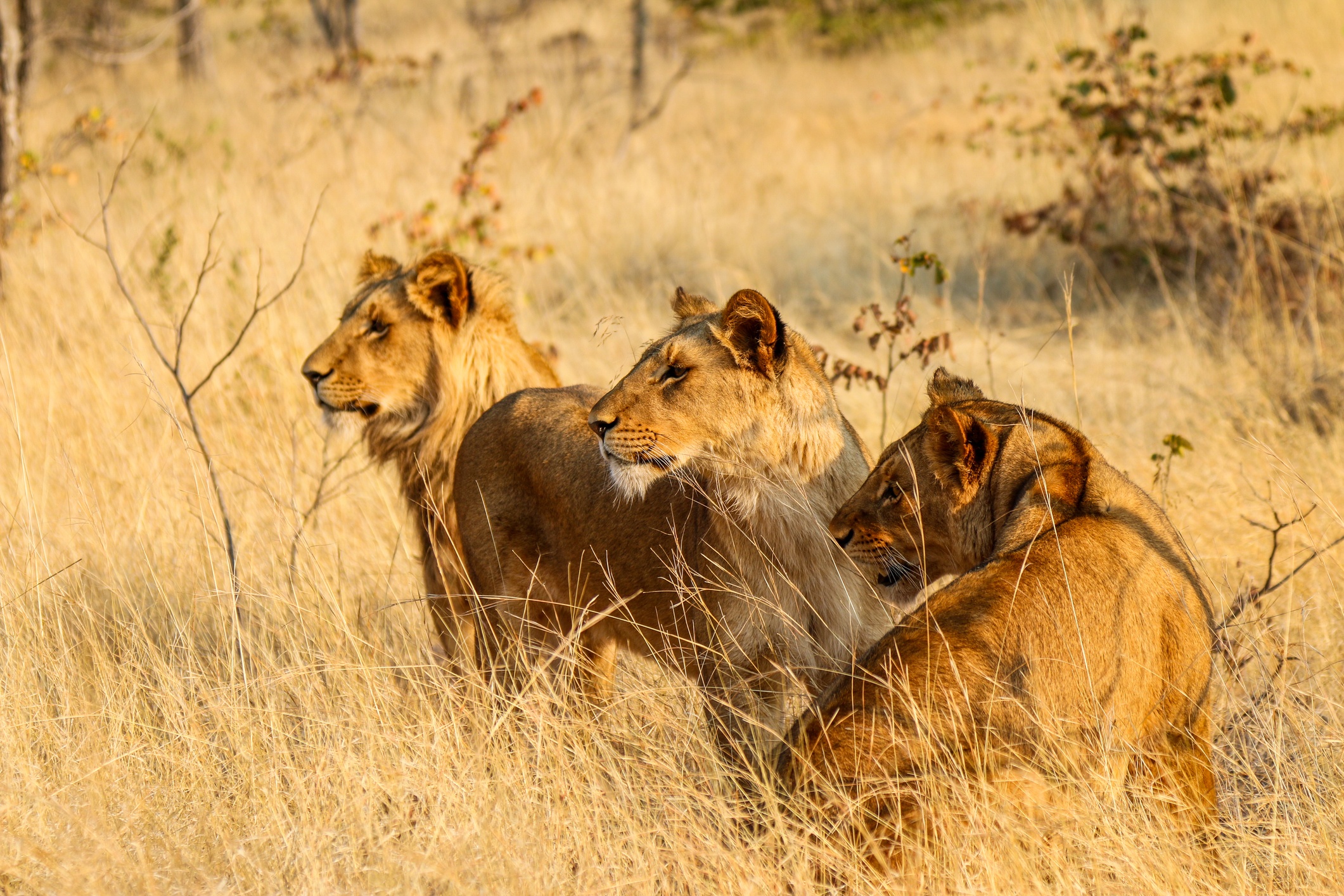
Zambia is thought to contain roughly 1200, however, with 40% of the country protected, it seems reasonable to assume that this population has the space to expand significantly over time.
South Luangwa national park has around 9 large prides (up to 30 lions in a pride)
Kafue national park has around 200 lions
Lower Zambezi national park also has a good number of lions
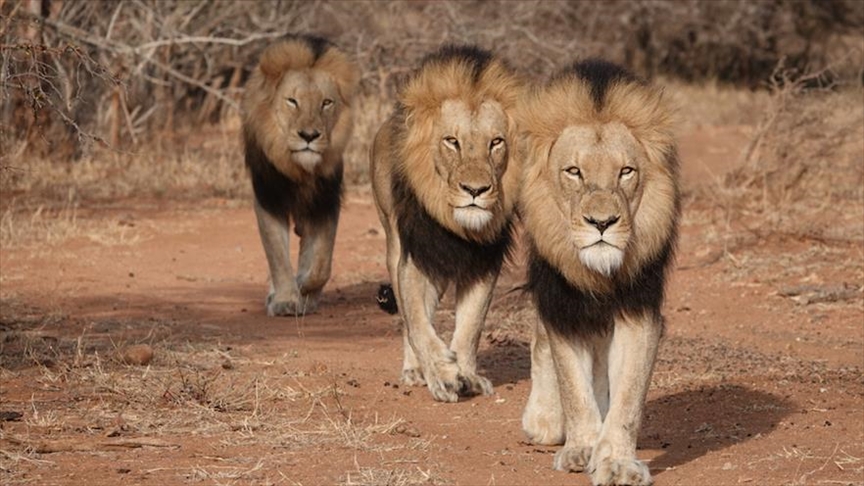
The latest survey of Zimbabwe counted 1709 lions in total.
Hwange National Park only has 500 – 700 lions, however, spread across an area of 5000 square miles (almost 15000 square km) however, it is considered a particularly good park to visit to see the wild lions because it has diverse habitat with grasslands and forests, a high density of prey animals, and the presence of permanent waterholes which concentrate wildlife, especially during the dry season, making lion sightings very common.
This is also part of a huge protected area, straddling 5 countries and protecting over 250,000 square km. We have several destinations within Hwange click here to see more about this huge reserve and the Hwange in particular.
Mana pools – having a similar density of lions, this is also a good place to see the animals.
Gohnarhezou national park, is a part of the larger Limpopo transfrontier park, and as such also has significant populations of lions. mallilangwe reserve is also attached to this national park, and this is one of the destinations we have listed click here to read more
There are also a variety of fantastic places to see lions, which I will add in the future.
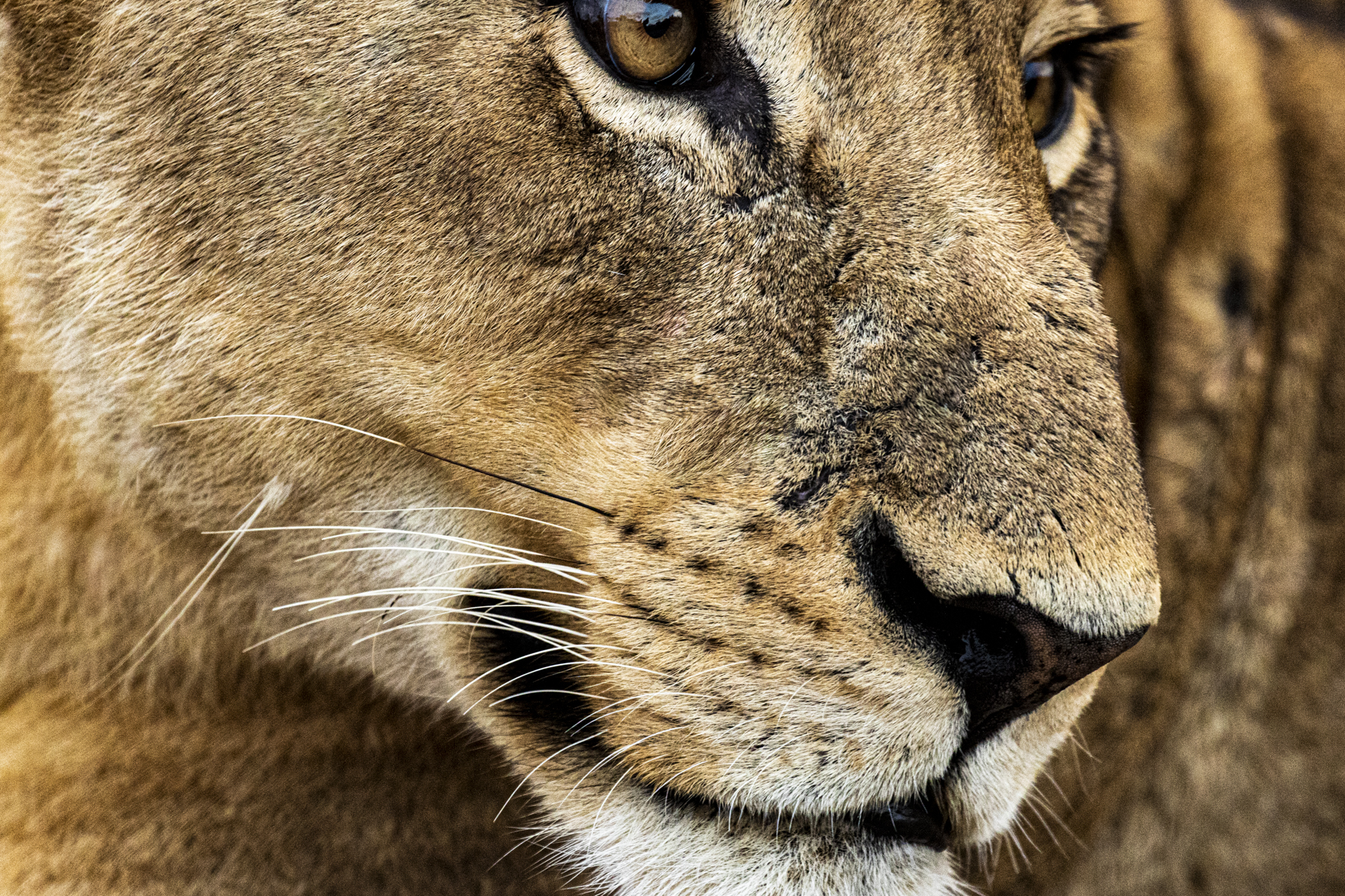
South Africa has a lion population which is only second to Tanzania in terms of lions with 3284. Between 1600 and 2200 (so over half) of these can be found within the Kruger national park and greater Limpopo transfrontier park (click here to see our links). As or perhaps more famous is the Sabi Sands private reserve. This is not only one of the best known private reserves, but also one of the largest in Africa. We also offer a number of destinations within Sabi Sands. We hope in the near future to allow booking of public campsites within the kruger national park as well – perhaps more intrepid, as you have to do things yourself, but also far cheaper. Please note, that each of the links below, send you to an ecosystem page. There are already often multiple places to stay, with an aim for this to only increase.
Kgalagadi Transfrontier Park (of which South Africa hosts the Kalahari Gemsbok National Park and the Gemsbok National Park in Botswana. The whole reserve is estimated to have a population of 3500 lions, with the South African section hosting around 750 lions (with the other 2700 living in the various Botswanan sections).
A reserve with a smaller lion population includes Sanbona Nature reserve (click here) Welgevonden (click here) and Madekwe game reserve (click here). There are of course plenty more than just these few, and I hope to be able to add these in the future.
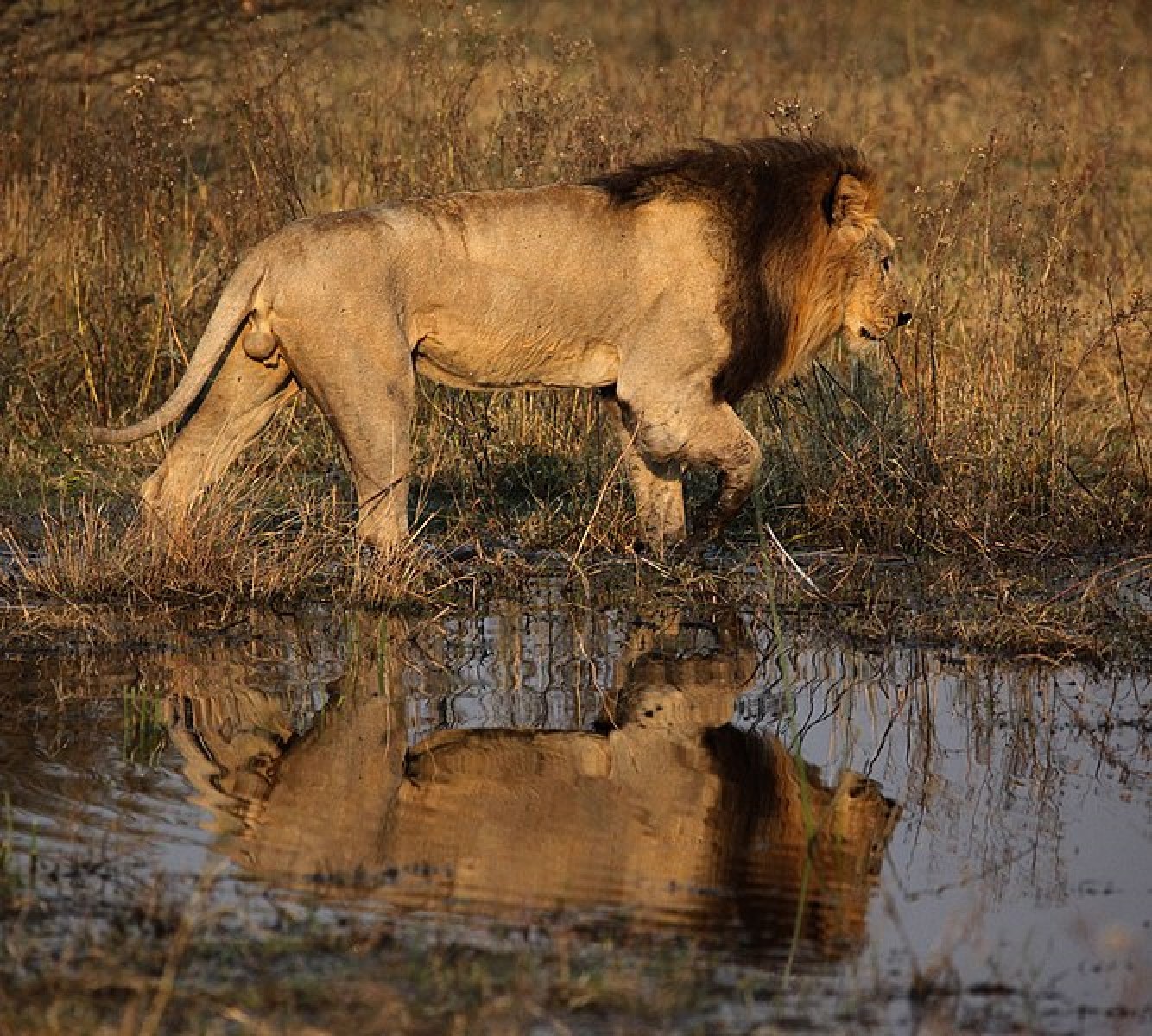
With a population of 3063, Botswana is the country with the third highest number of lions.
Much of botswanas lions live within the Kaza transfrontier park (click here), which protects the Kalahari desert and the Okavango delta. However, another big source of lions is the Kalagadi transfrontier park (our only destinations within this ecosystem can be reached here), which is shared between several areas in Botswana and South Africa, across the border.
Botswana has set aside a large portion of its country for wildlife, so this is one of the shining lights in terms of places where the lion might survive.
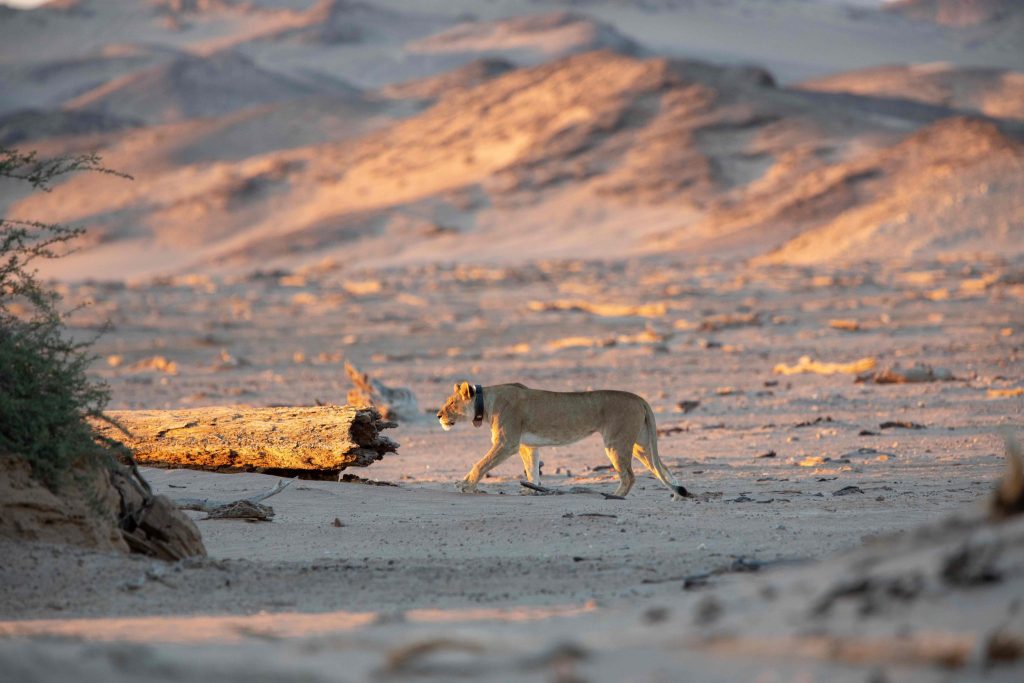
Namibia hosts a population of 1435 lions in a variety of habitats.
Of particular interest is the Kalahari desert, I hope to add destinations for this fascinating area, in the near future.
All lion news on the site
There is a well known rift between Prince William and Prince Harry, but it is based on an important aspect of conservation
Unfortunately, this disagreement, is not restricted to within the royal family, quite to the contrary. There are many species that it is hard to live
Male dominance is perhaps less the default than thought amongst primates, a new study has found
Given our assumption that on male dominance, it is perhaps surprising, that only 58% of primate species have dominant males. Perhaps not surprising, as a
Orca roundup (killer whale news)
The Southern resident killer whale population is on the brink of extinction, but it seems, not for the reason that people thought. Found along the
Restoring a DRC reserve from a ‘triangle of death’ back into a thriving wildlife reserve
Upemba national park had virtually all its large mammals poached, but it is coming back (below is a 3 minute video about this decline). Just
It is becoming increasingly clear: humans are responsible for the loss of mega fauna that we can see in the past
The skeleton above is the closest we can get to a real mammoth, as a result of their extinction. However, it is not the only
The livestock lobby is fighting against lab-grown meat this is why we must not let them win
Livestock takes up roughly 20% of the worlds land, or around 50% of the worlds agricultural land. Astoundingly, around 1.3 billion people around the world



